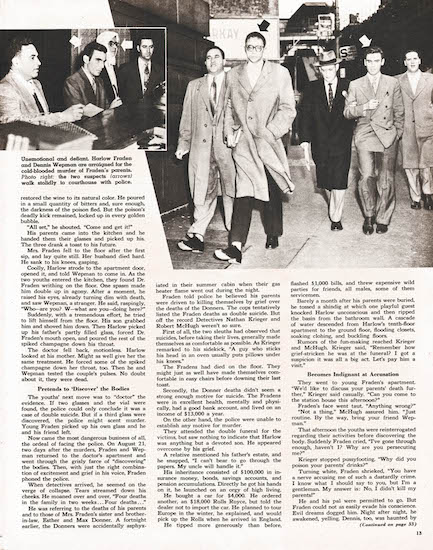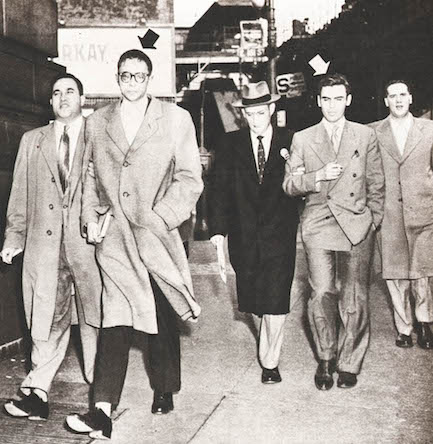| Vintage Pulp | May 30 2021 |

Please not his face! I like to sit on that!
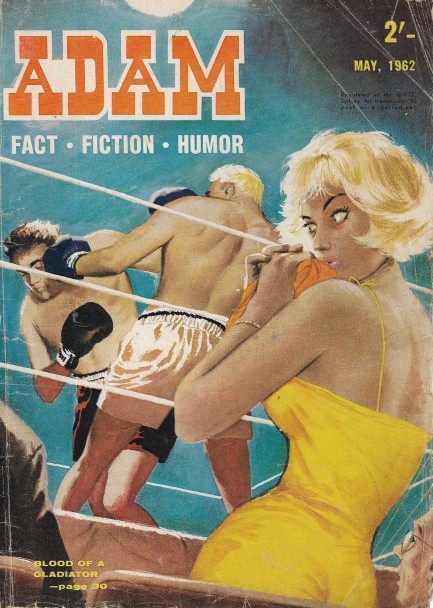
The Pulp Intl. girlfriends thought our little subhead was vulgar, but that happens sometimes, because they have far more class than us. Sometimes they ask us why so many of our quips and puns are sexual. We're like, “Have you looked at the covers?” The sexual subtext is nearly always there. We just run with it. Anyway, here we have another issue of Adam magazine, this one published in May 1962, and we've lost count, is it the seventieth we've uploaded? *runs downstairs to consult researchers chained in windowless basement room* Yep, that's right. Seventy. We have probably thirty more unposted, and about a dozen we bought from Australia that may or may not arrive if the person who accidentally ended up with them really relinquishes them. Long story.
What's a short story is “Blood of a Gladiator,” which the above art by Phil Belbin was painted to illustrate. The tale is by Damon Mills and deals with a down-and-out ex-boxer who gets involved in a scheme to manage a hot new fighter and get him a title shot by any means necessary. Naturally there's a femme fatale. There always is. She's the sister of another fighter, and she complicates matters greatly, as femmes fatales always do. “Blood of a Gladiator” isn't the only boxing inside Adam, as the editors also offer readers a detailed story on American welterweight Freddie Dawson, aka the Dark Destroyer, who's remembered in Australia for decimating the ranks of local fighters while touring Down Under between 1950 and 1954. You also get a story on crocs (there's always a story on crocs), some unknown models, and plenty of cartoons. We have twenty-five scans below.

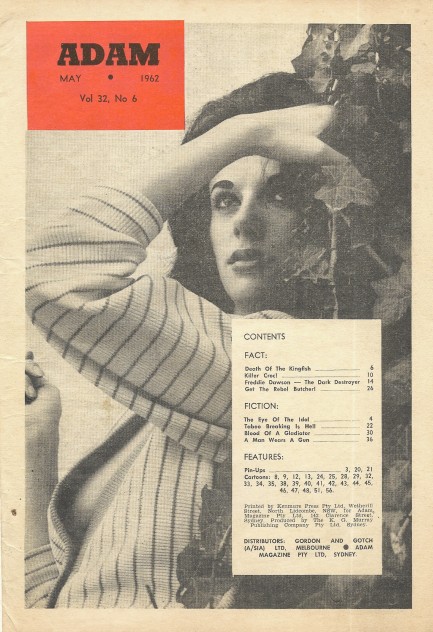
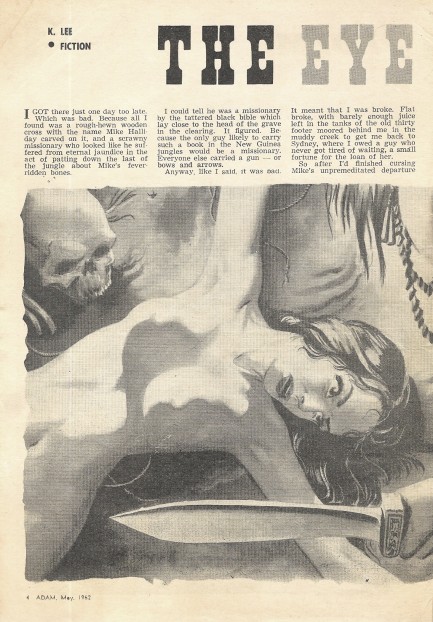
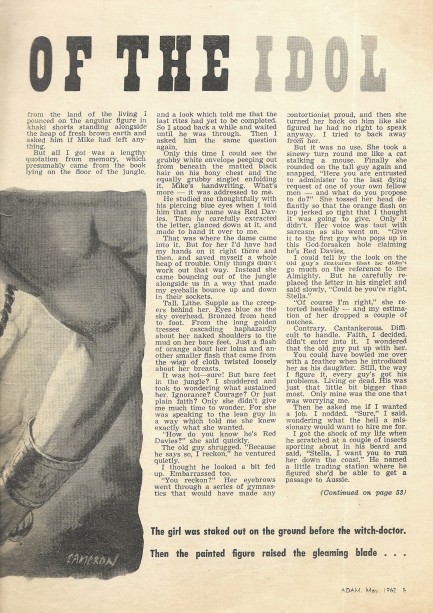
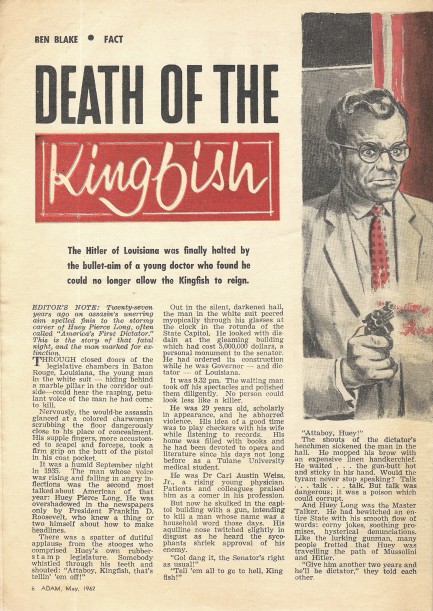
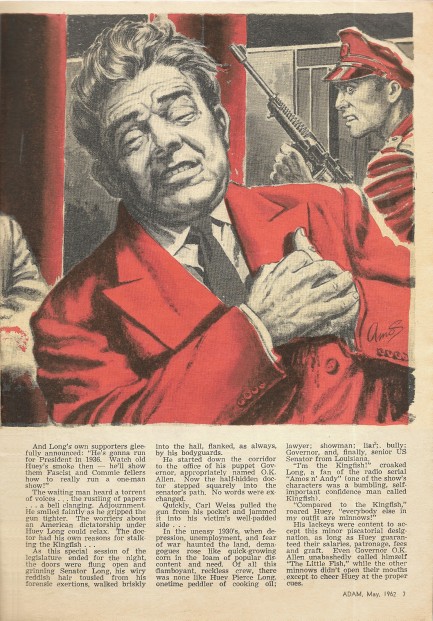
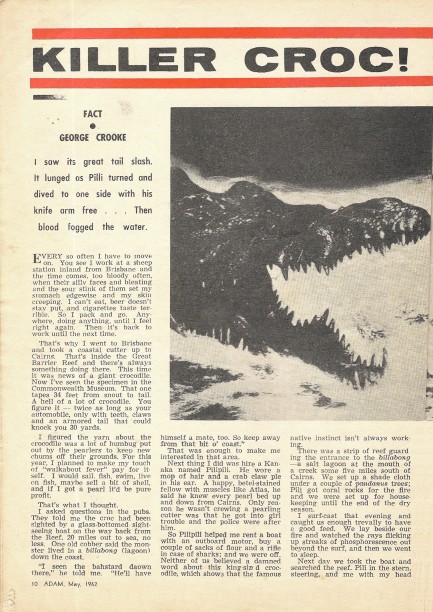
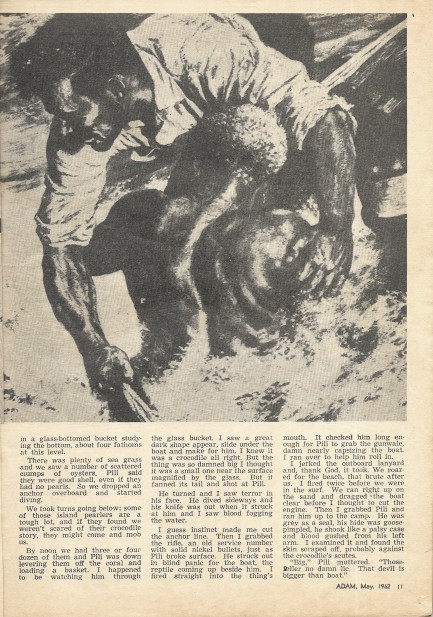
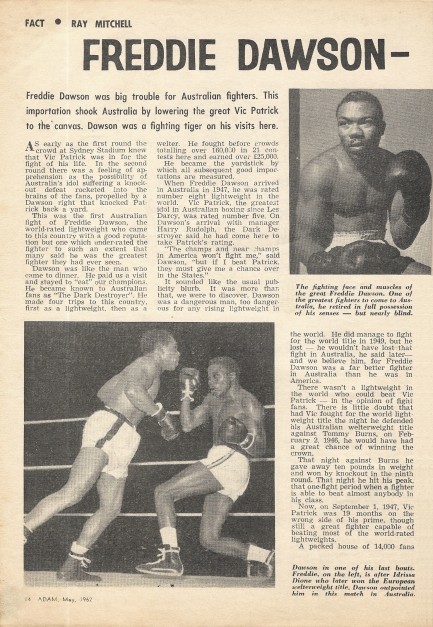
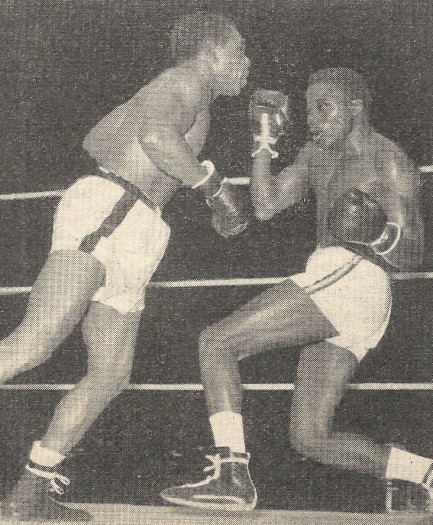
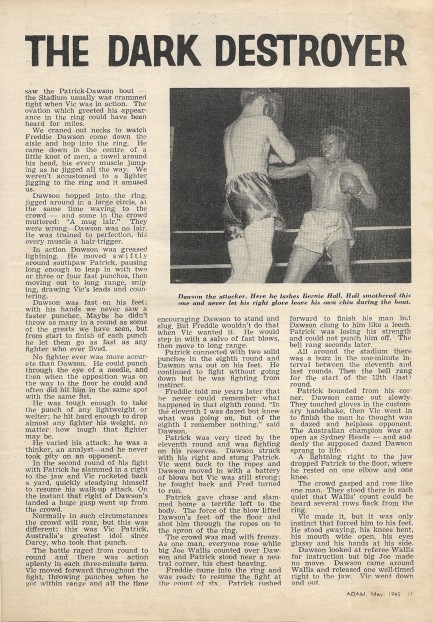
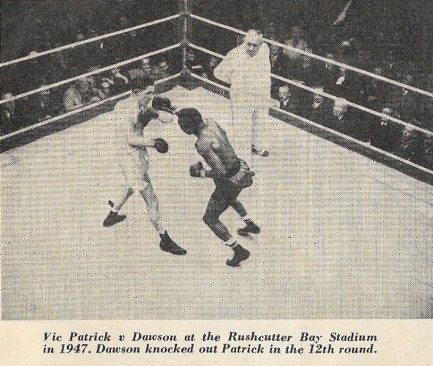

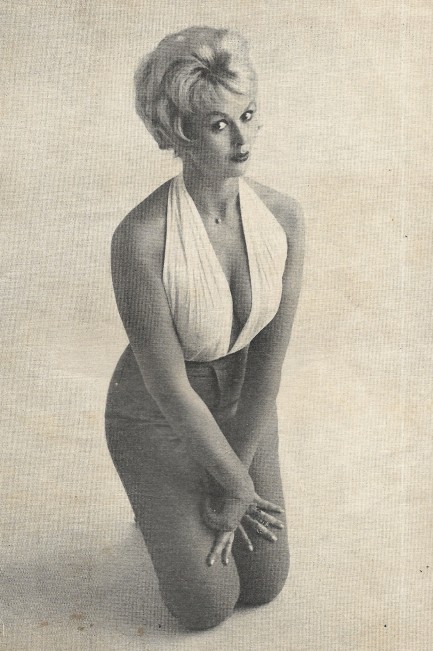
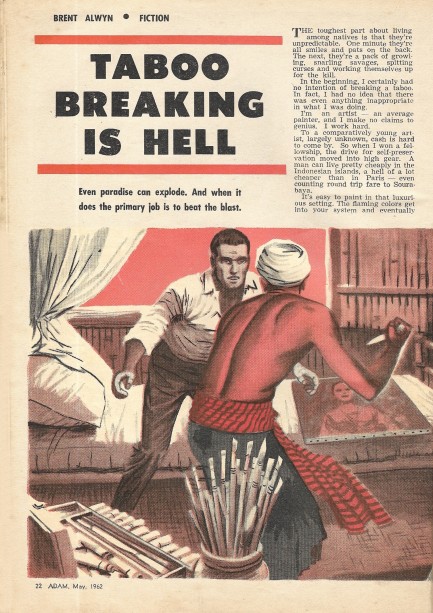
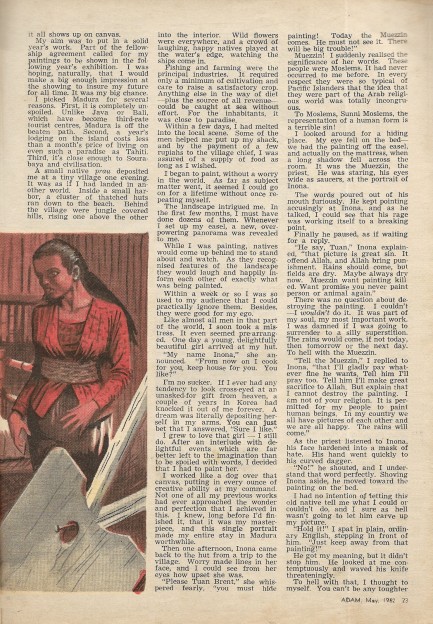
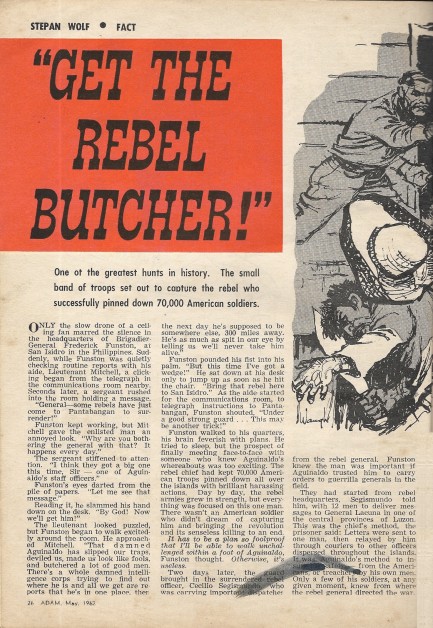
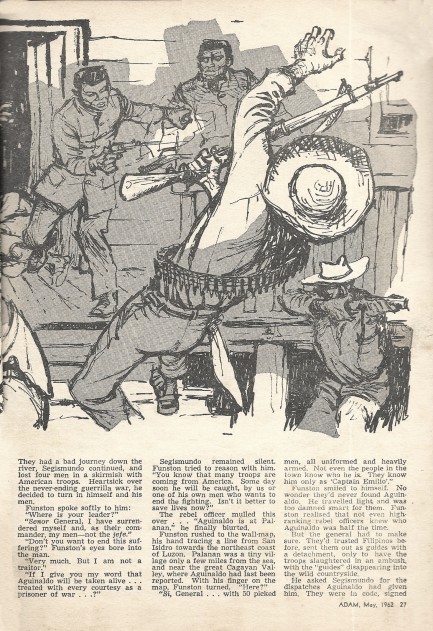
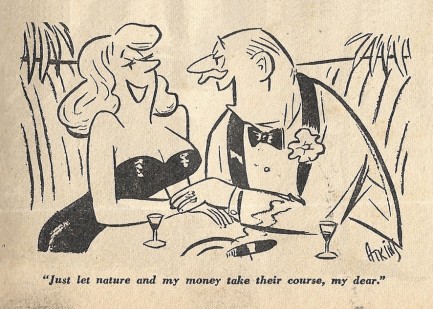
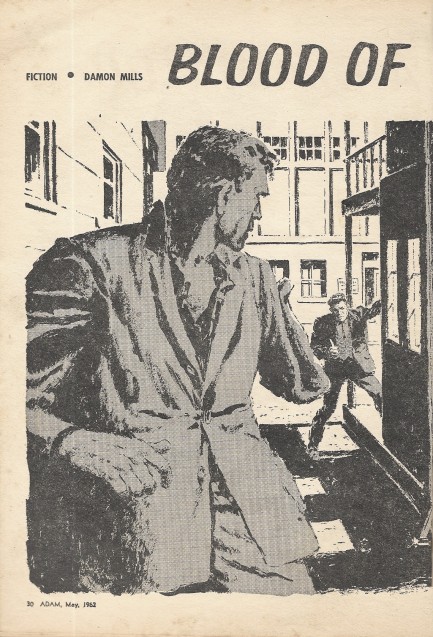
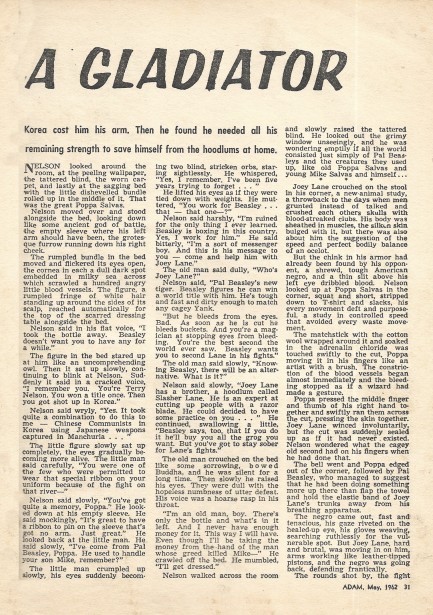
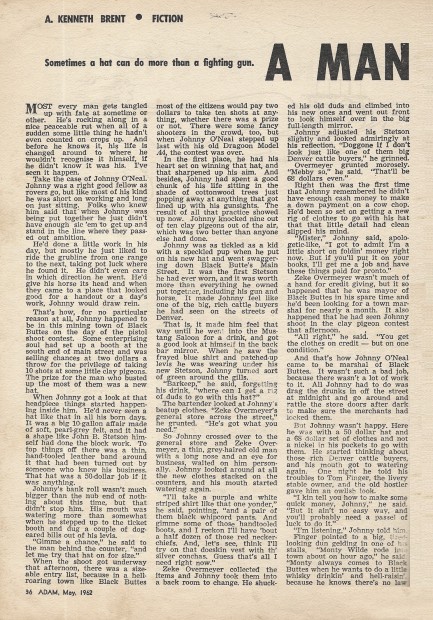
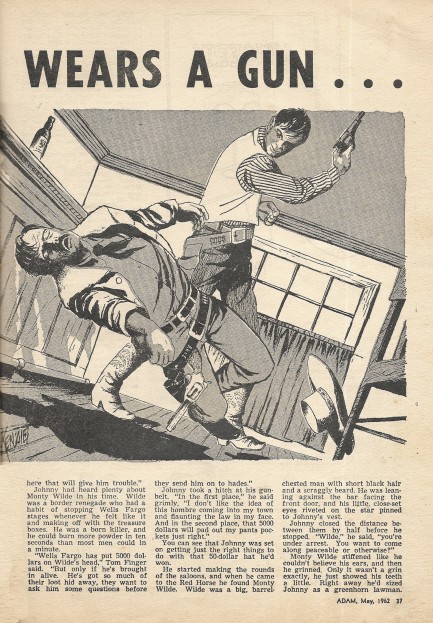
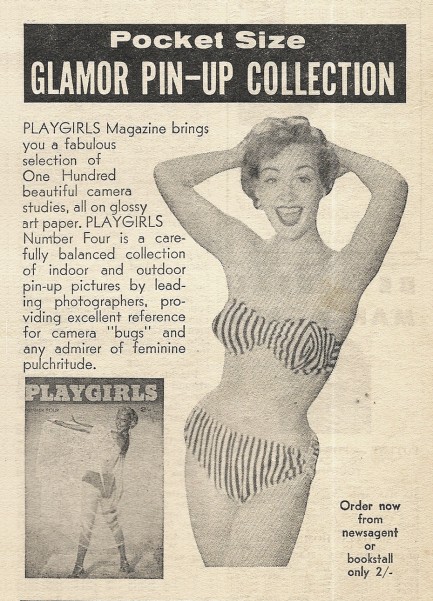
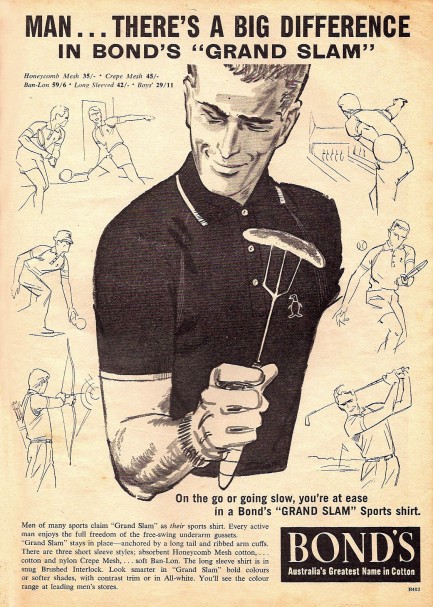
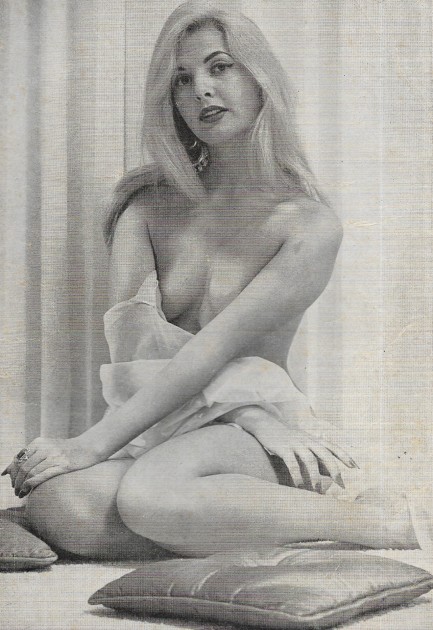
| Intl. Notebook | Mar 28 2021 |

It's a tough job but some tabloid has to do it.
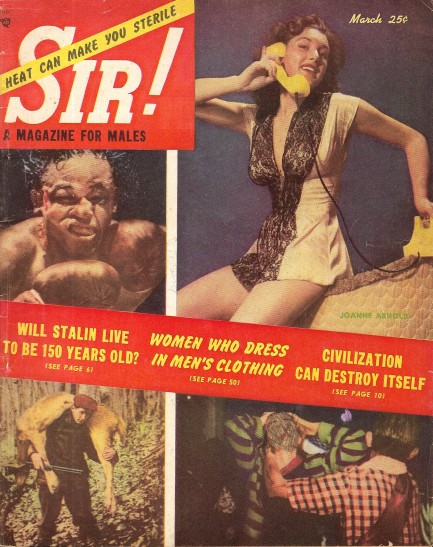
Above is the cover of a March 1953 issue of Sir! magazine, and in an example of the ephemeral nature of such items, shortly after we scanned this we spilled a glass of red wine on it. So behold! It's even more rare than it was when we bought it. Above the slash you see boxer Kid Gavilan, he of the famed bolo punch, and on the right is model Joanne Arnold, who we've featured before here, here, and here. She doesn't appear inside. But what you do get is a jaunt through such exotic locales as Melanesia, Tahiti, and Lisbon in search of knowledge and thrills.
We were drawn to the Lisbon story, which the magazine describes as a capital of sin. To us the word “sin” means late nights, good intoxicants, fun women, and excellent entertainment. To Sir! it means being cheated, robbed, framed, and arrested. To-may-to to-mah-to, we guess. We've spent some time in Lisbon and we love it. We don't know what it was like in 1953, but Europe was still coming out of World War II, which means many countries—even non-combatants like Portugal—were wracked by poverty. So we wouldn't be surprised if thieves were out in droves.
Elsewhere inside Sir! you get art from Jon Laurell and Joseph Szokoli, photos of model Jean Williams and Tahitian beauty queen Malie Haulani, a story on the danger of nuclear weapons, anthropological snobbery in exposés about New Caledonia and the Kogi people of Colombia, and fanciful theories about Russian scientists working to keep Josef Stalin alive for 150 years—which didn't work, because he died a mere five days after this issue of Sir! hit the newsstands. Clearly, the magazine is cursed. It certainly cursed our wine glass. We have thirty-five scans below for your enjoyment and other issues of Sir! here and here.
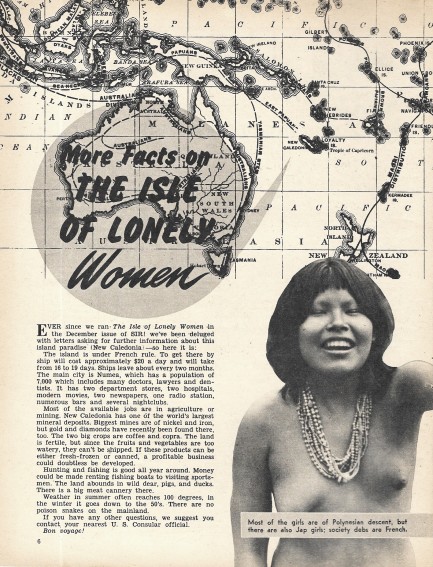
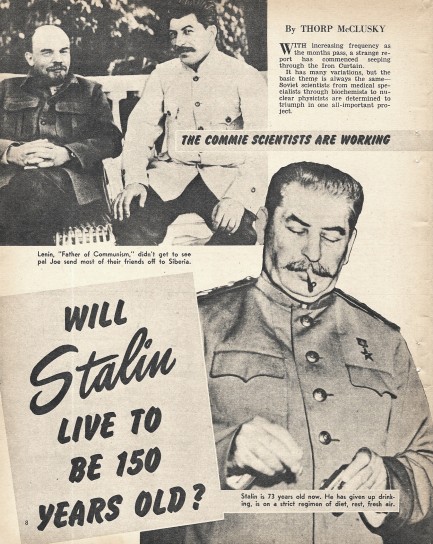

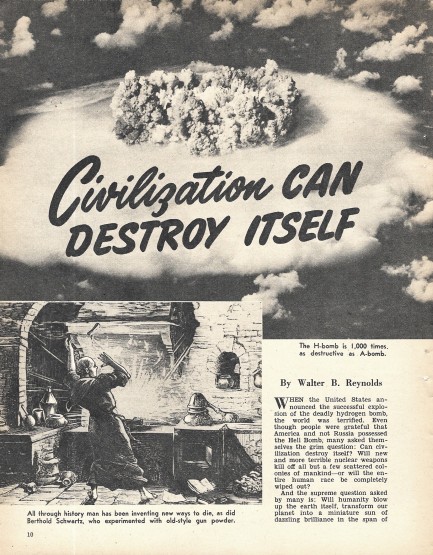
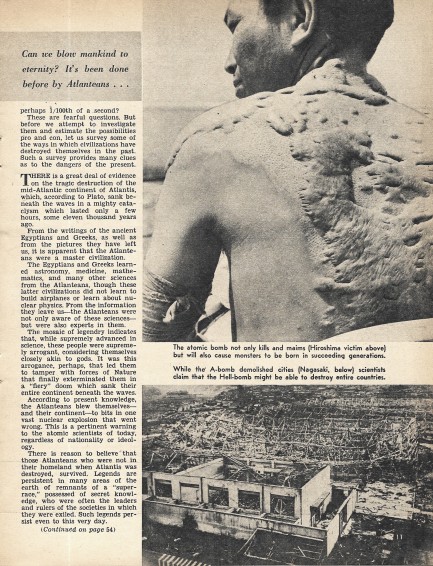
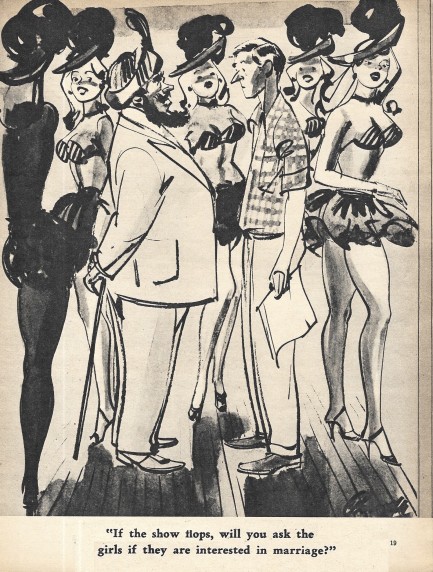
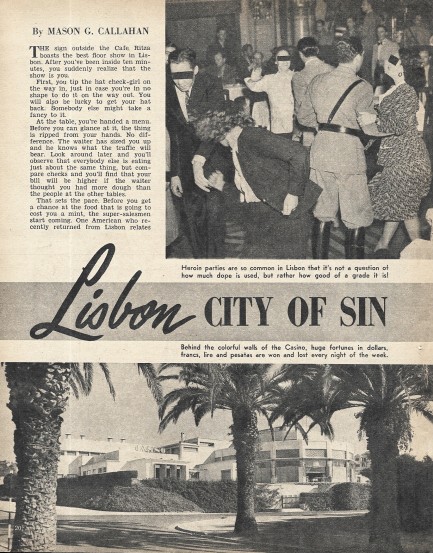
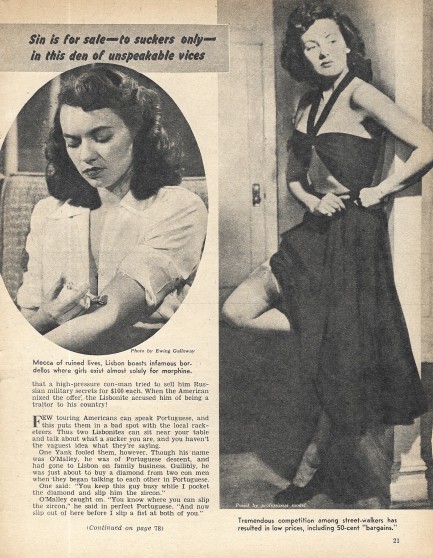
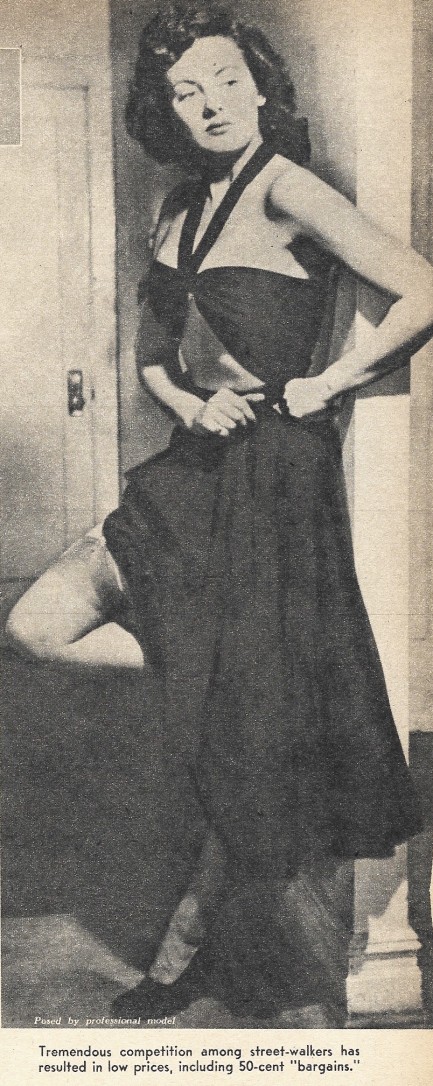
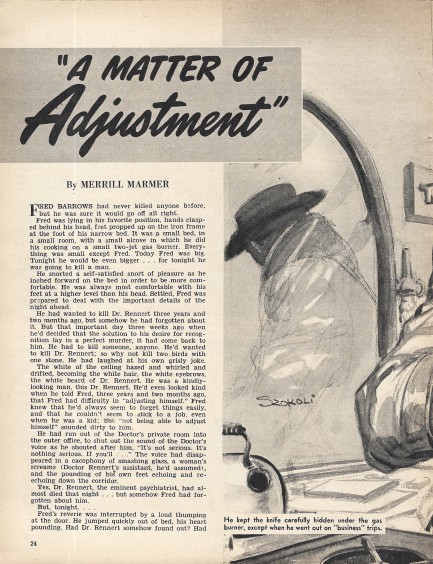
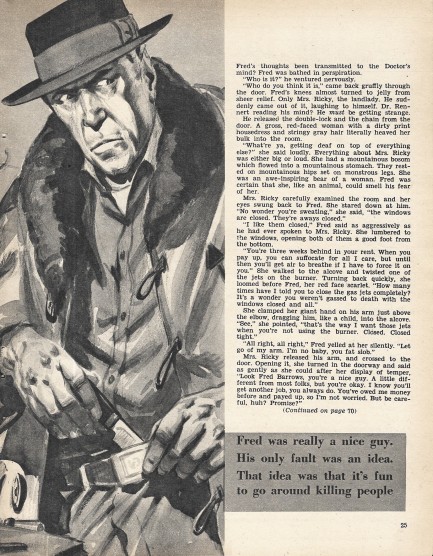
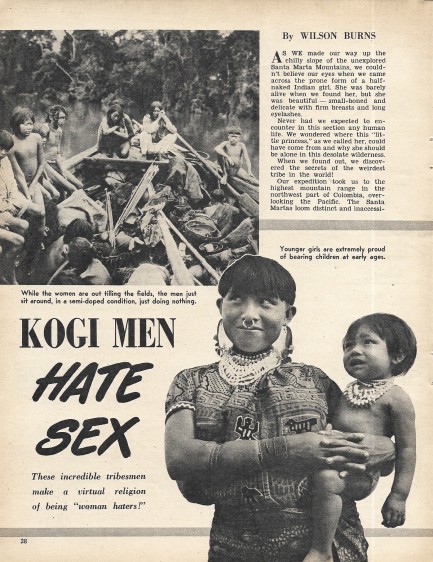
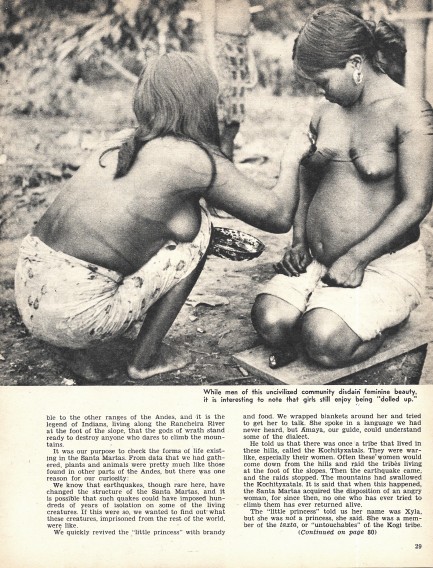
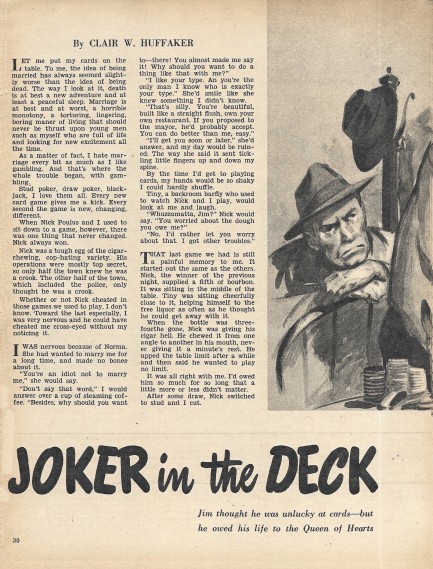
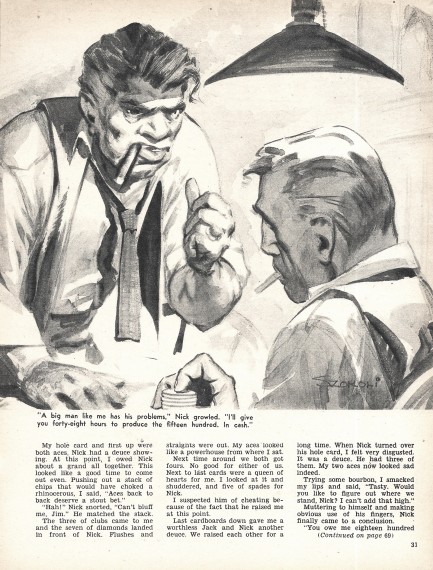
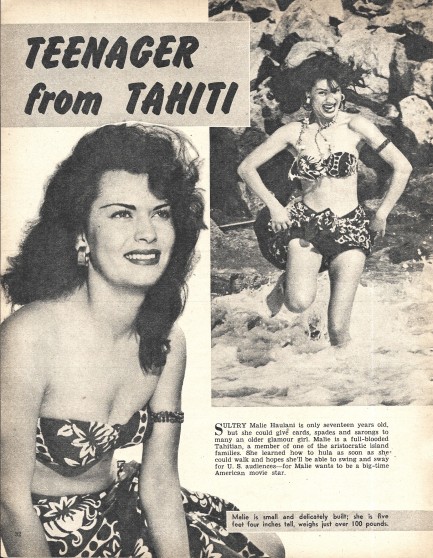
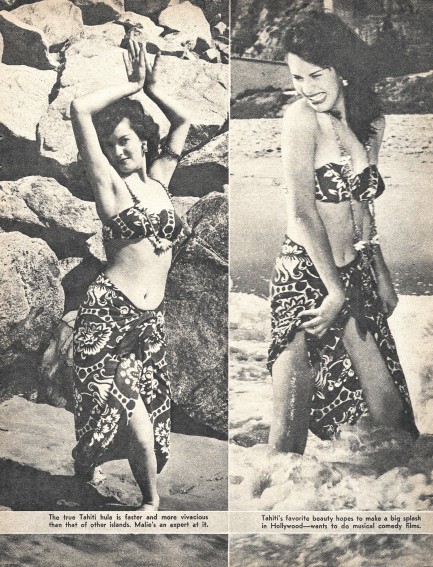
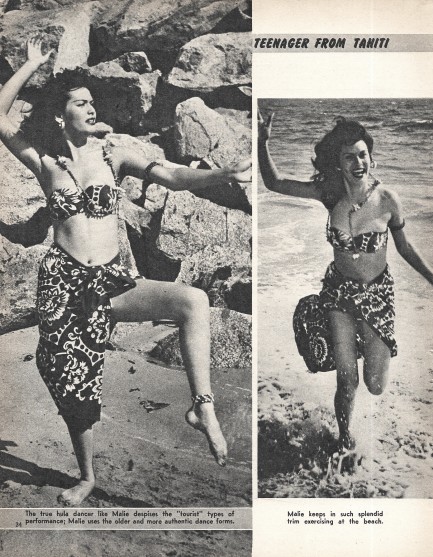
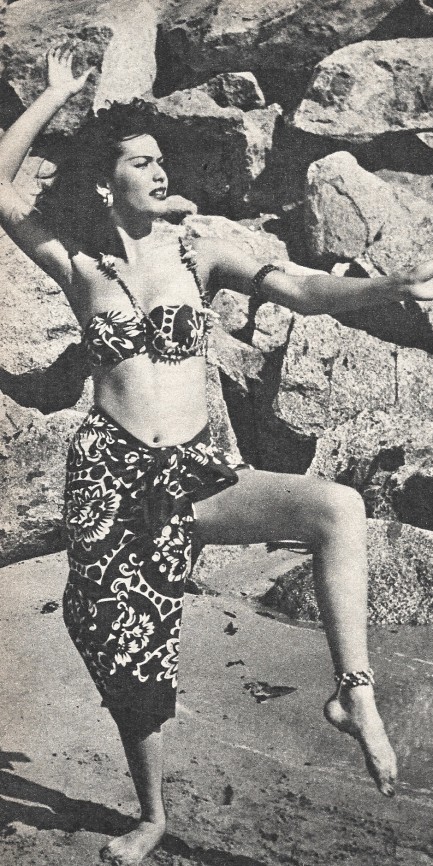
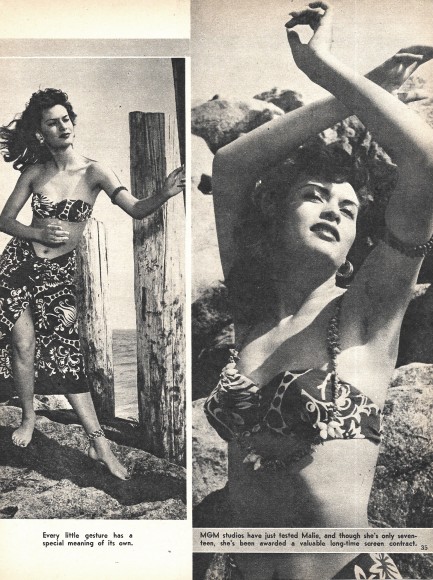
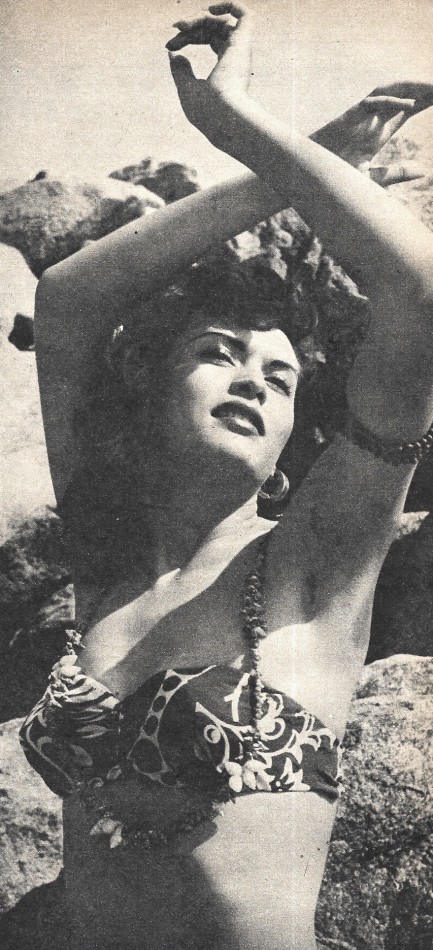
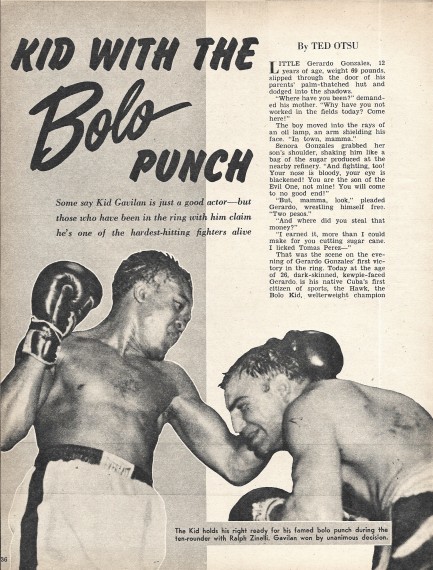
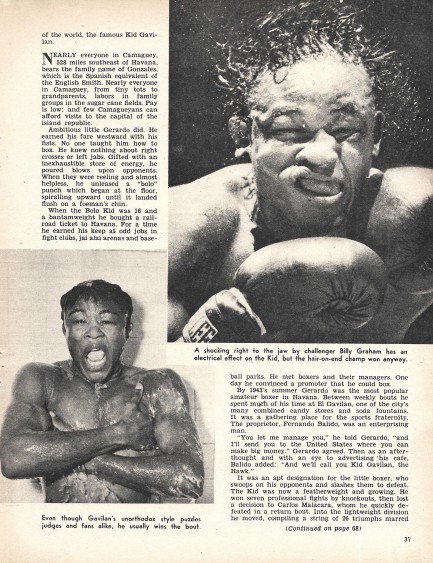

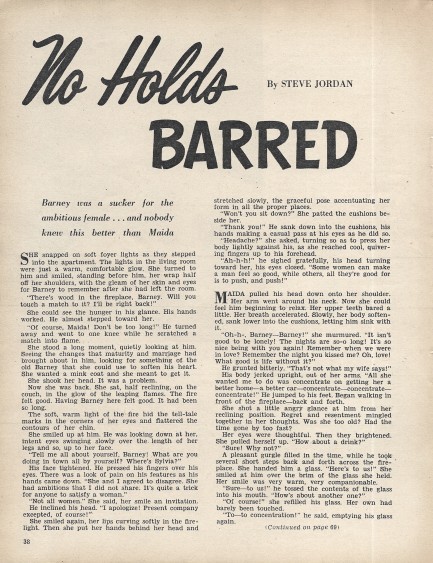
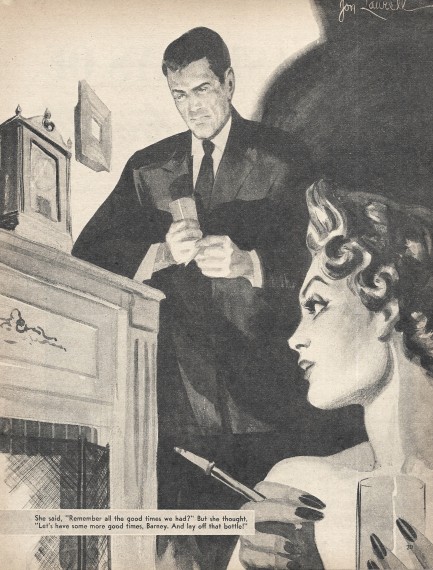
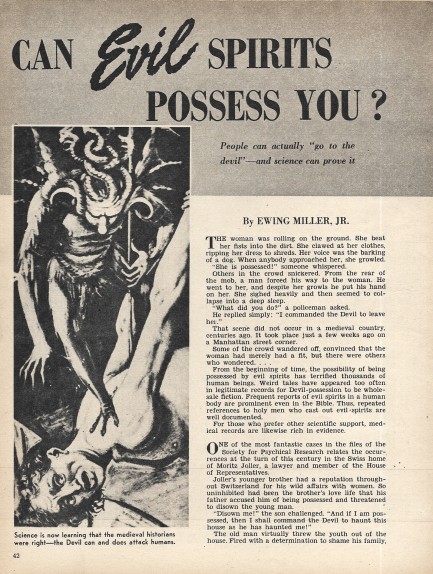
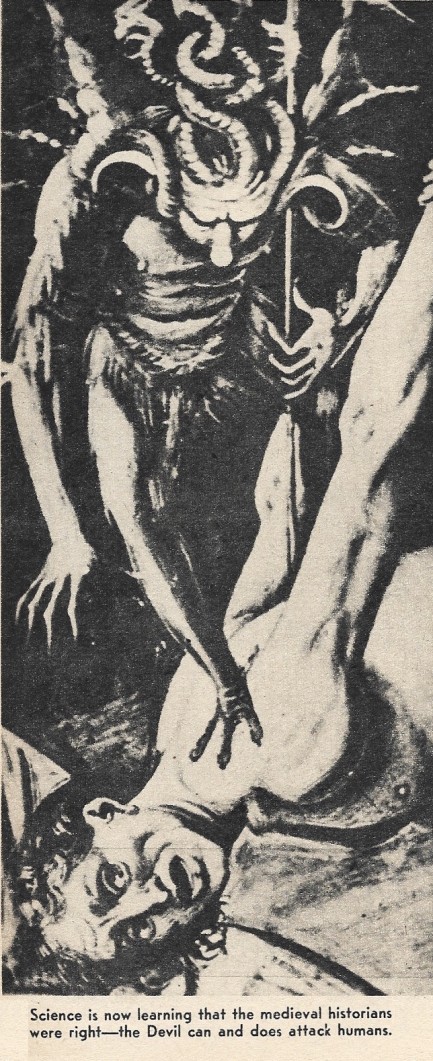
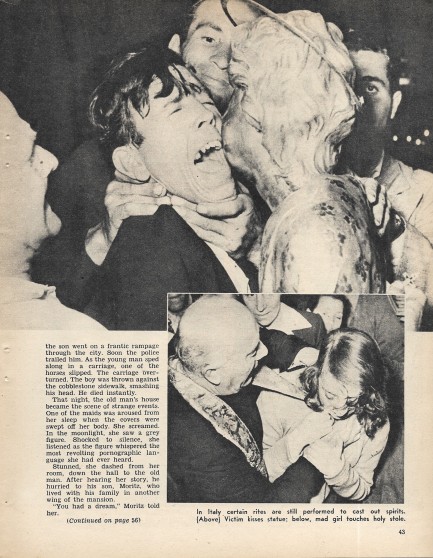
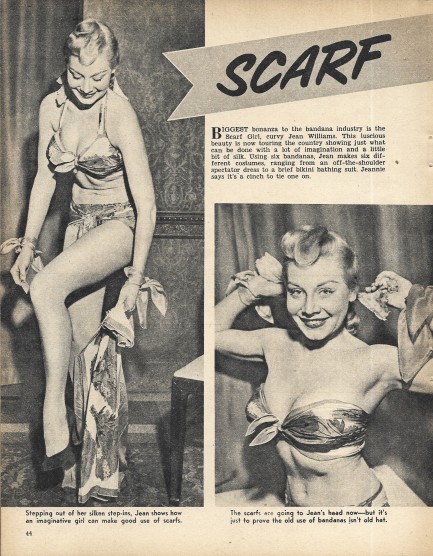
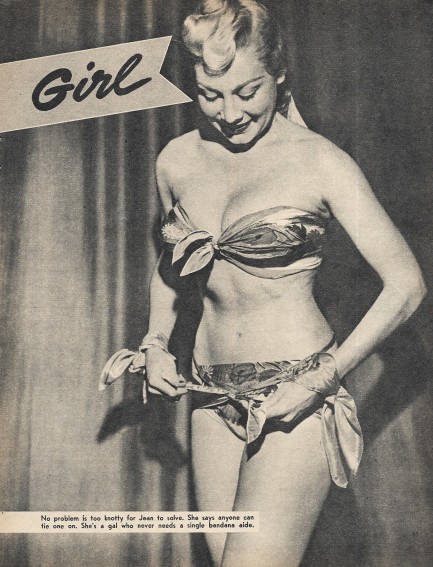
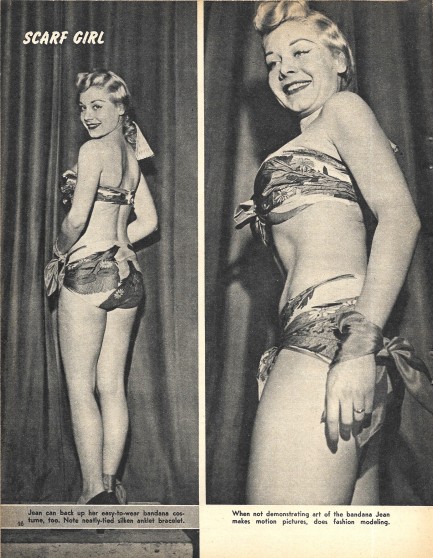
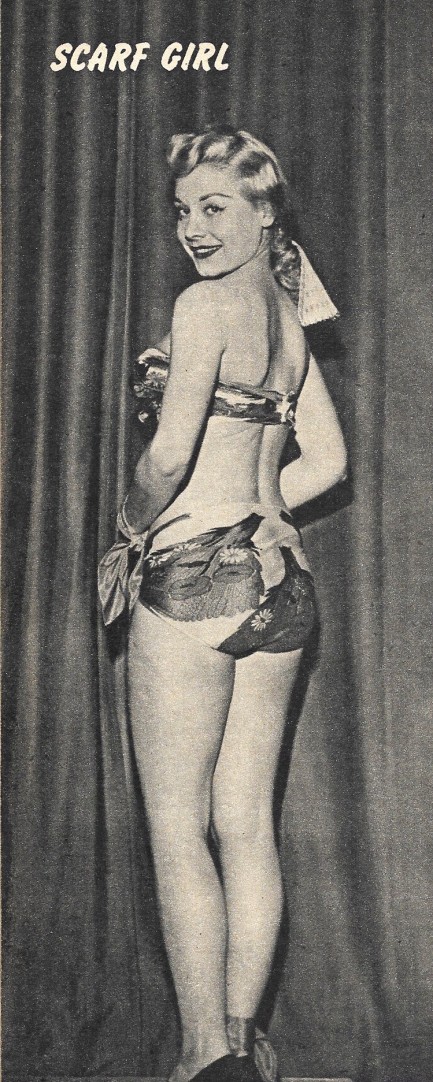
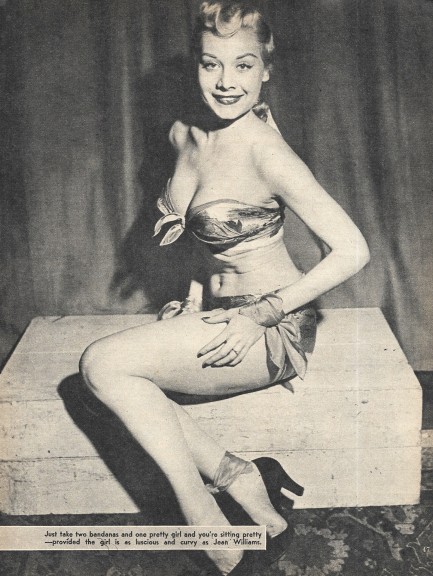




































| Intl. Notebook | Apr 5 2020 |

It's time for a Man to Man discussion.
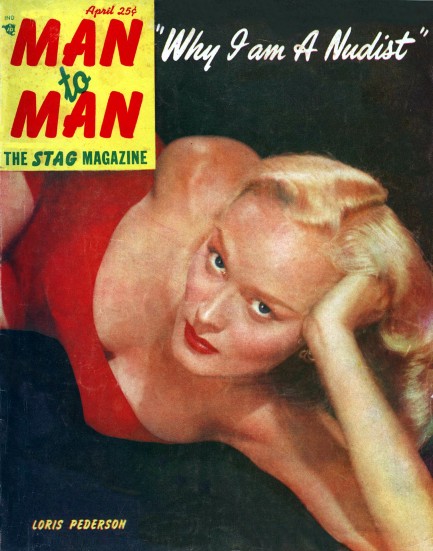
Man to Man magazine was launched in December 1949 by New York City based Volitant Publishing, the same company behind Sir, Laff, and True. And indeed, sir, the magazine's a laff, true enough, not in the sense that it's terribly funny, but in the sense that it's wonderfully distracting. The issue you see here was published this month in 1952, with cover model Loris Pederson, and interior photos of other models, showgirls, and beauty pageant contestants, all striving for celebrity status, but all pretty much lost in the mists of time. Not that we're denigrating them in any way. With celebrity status usually comes financial independence, and the possibility of achieving that is reason enough to grasp for the brass ring, even if, like all the women here, you don't make it. Besides, we all grasp for that ring, one way or another. It's just that in show business, you do it in public.
Along with the many figures in Man to Man, there are also facts. At least, things purported to be facts. For instance, you learn that in 1952 London was the “world's largest paradise of prostitutes.” By definition, that sounds more like an opinion, but whatever. It struck us that only in a men's magazine would you come across the words “paradise” and “prostitutes” in the same sentence about civilization's oldest vice. There's also an article about taxi dancers, women who worked at nightclubs and took payment to dance with men. Apparently the going rate was a dime, and the article asks if the practice was immoral, its insinuation being that the practice groomed women for prostitution. We suspect most customers probably just wanted momentary companionship, but it only takes a minority of bad apples to spawn more vice, and those unpleasant men—like death, elections, and the end of baseball season—always seem to come around no matter what you do.
At least women get their revenge in this issue. An article on supernatural strength features art by Mark Schneider depicting an angry woman slinging a seated guy airborne across a room, chair and all. It's possible she had just learned what's in a typical men's magazine. If the photo had a caption it might be, “For the last time my name's not honey, cutie, baby, or sweetie!” We wouldn't even think of defending men's magazines from accusations of sexism—it's their overriding characteristic. But we will say that they're gold mines for Hollywood anecdotes that have been long forgotten and obscure celeb photos previously unseen online. Since many of our visitors are by now under some sort of quarantine or other, we recommend killing time with a digital stroll through our website, where you'll find many other men's magazine. We'll start you off with this one, this one, and this large group, plus, of course, the forty scans below.
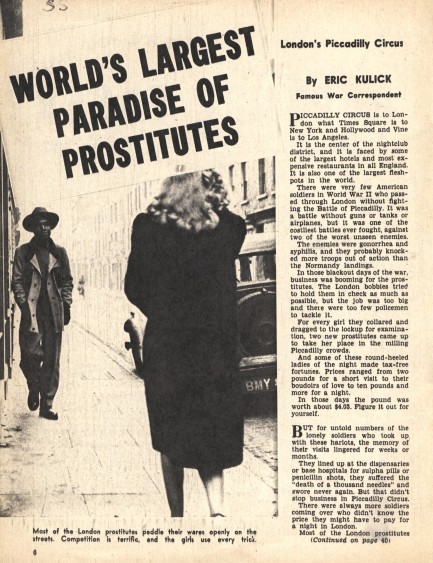
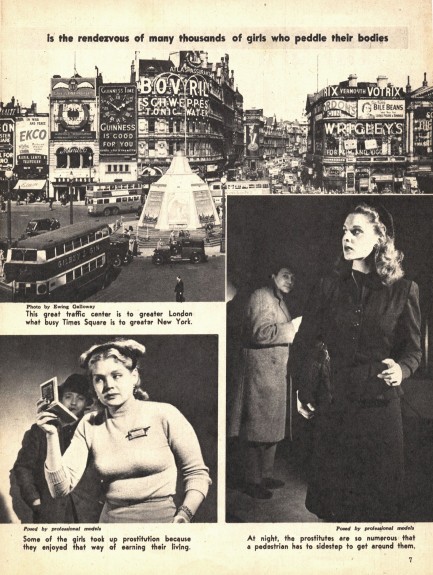
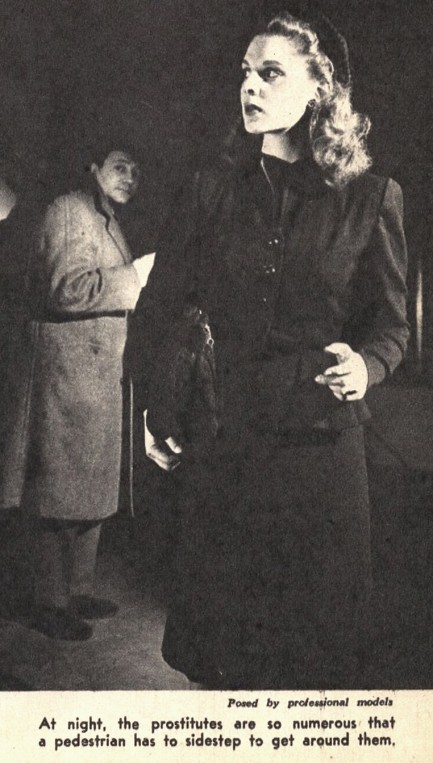
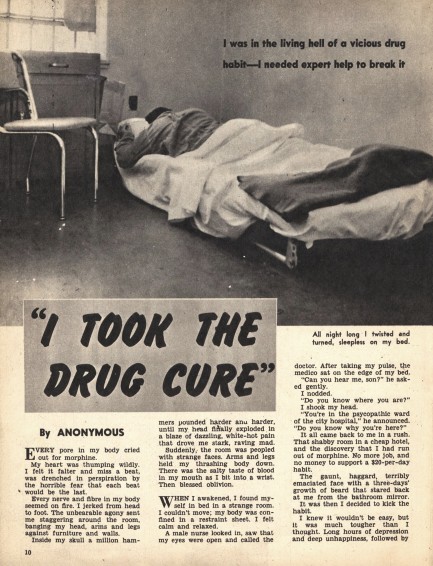
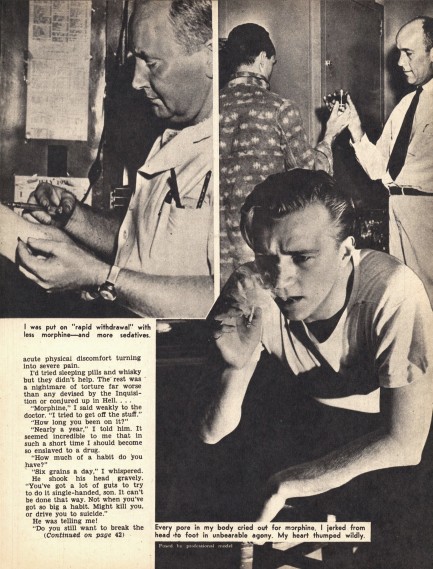
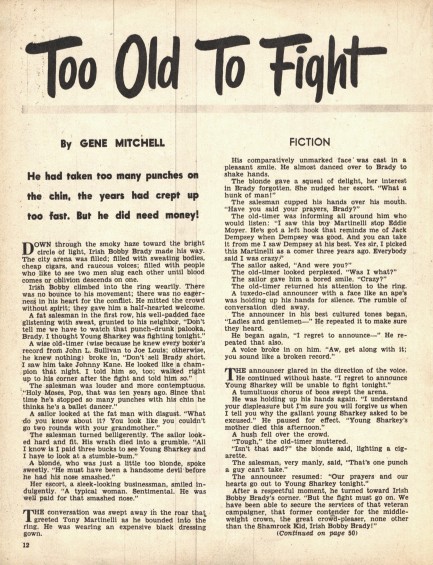
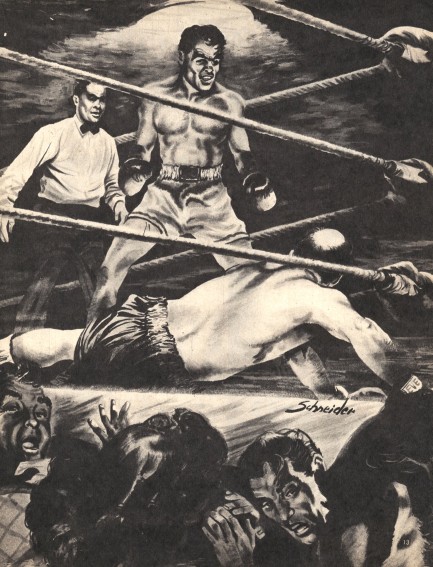
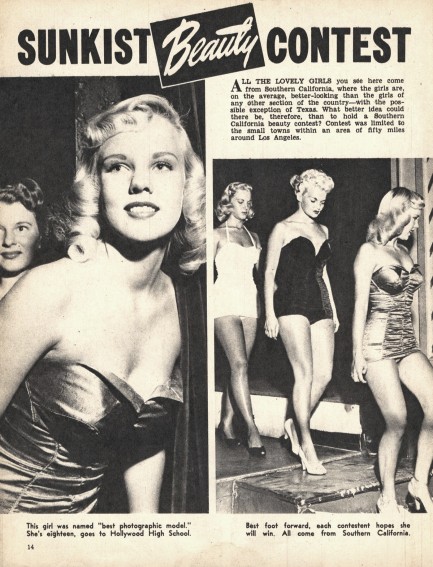
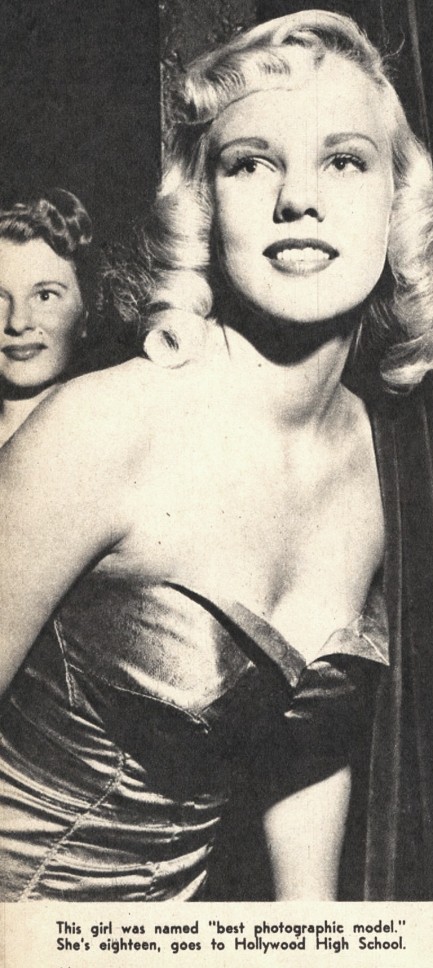
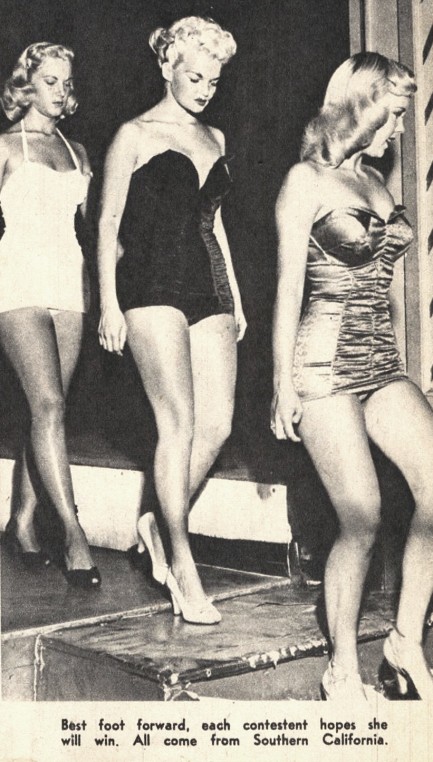
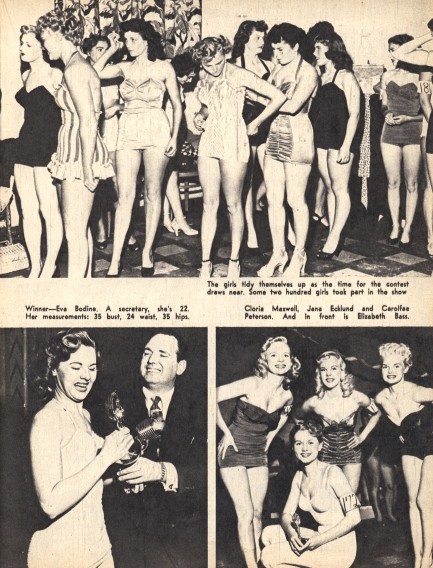
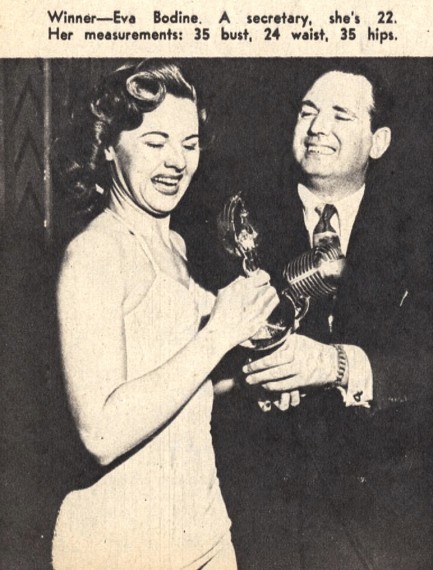
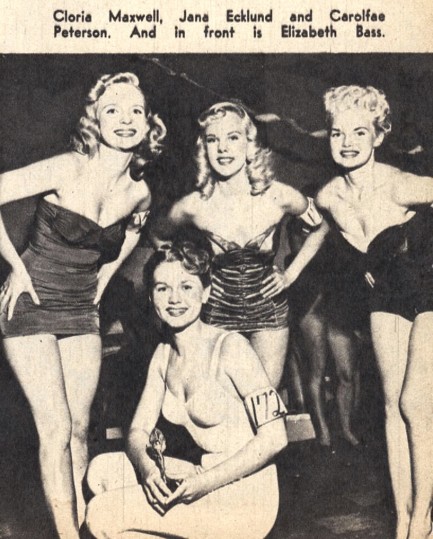
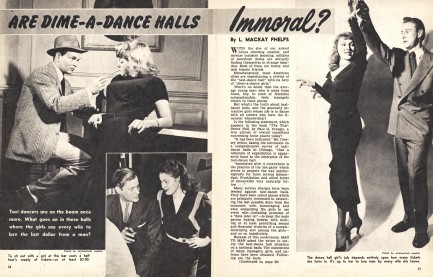
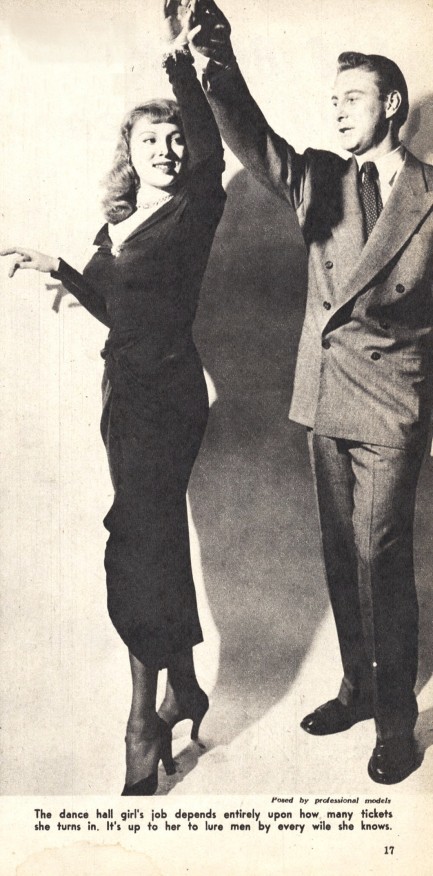
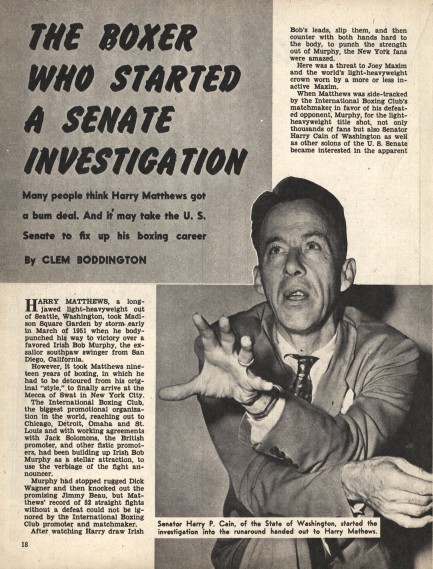
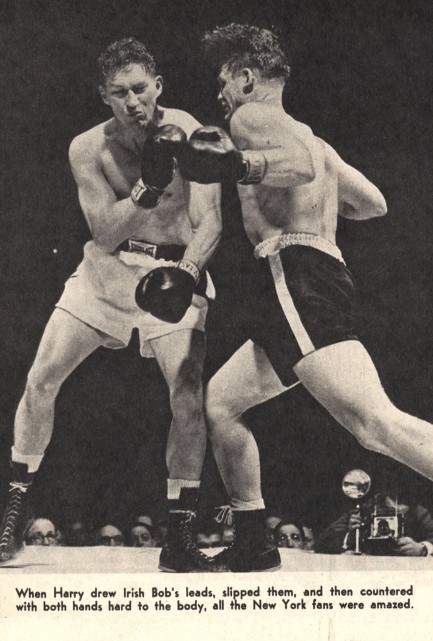
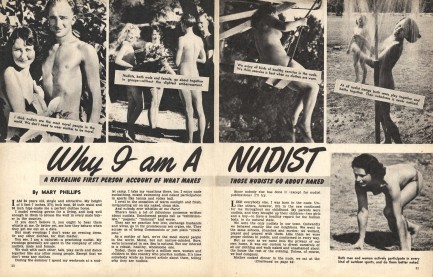
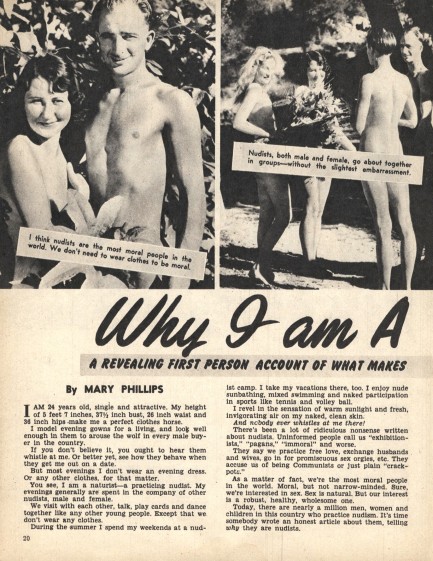
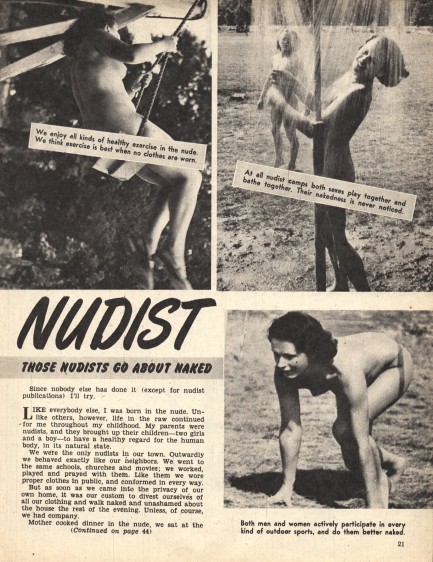
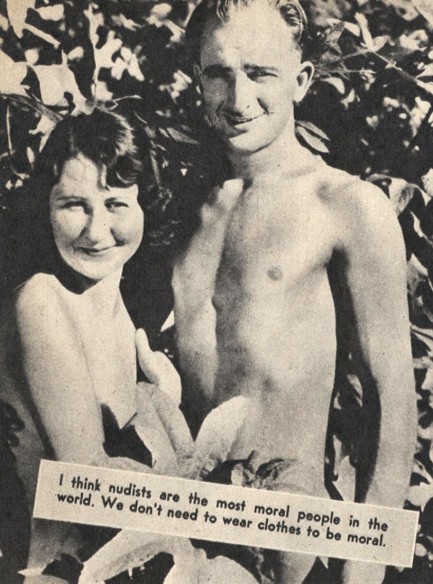
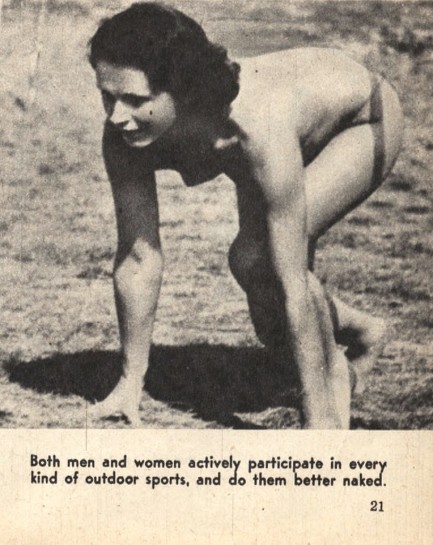
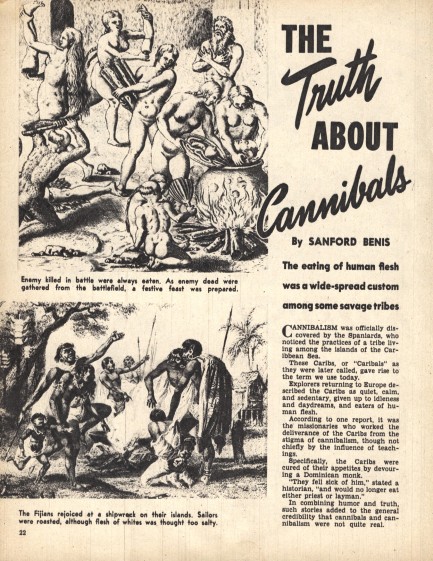
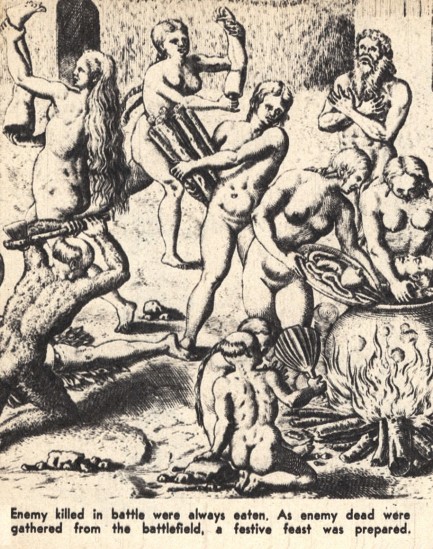
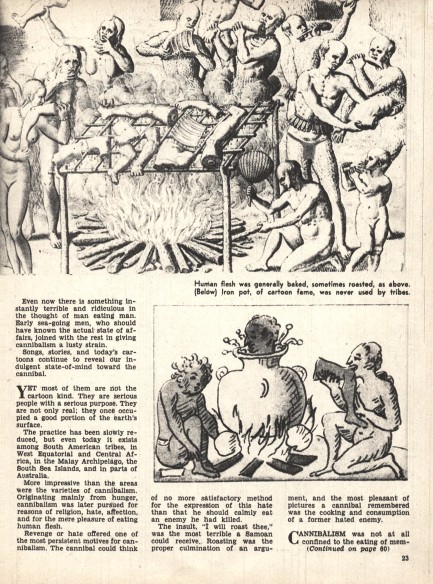
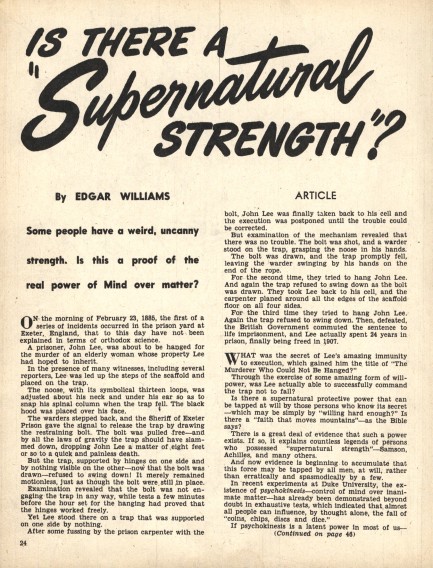
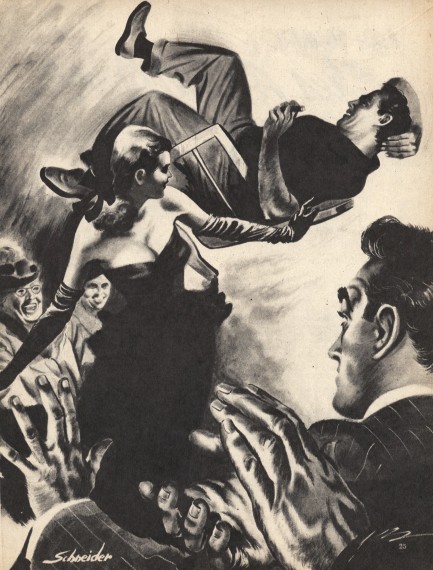
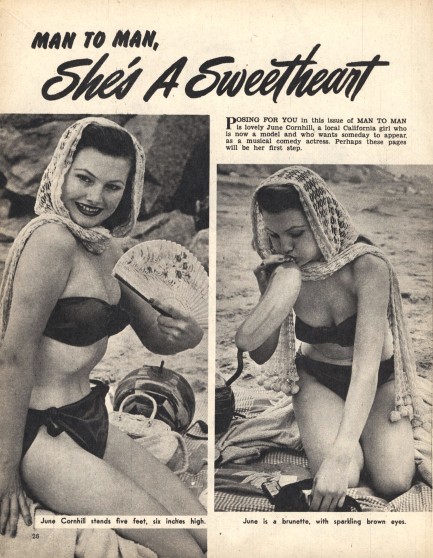
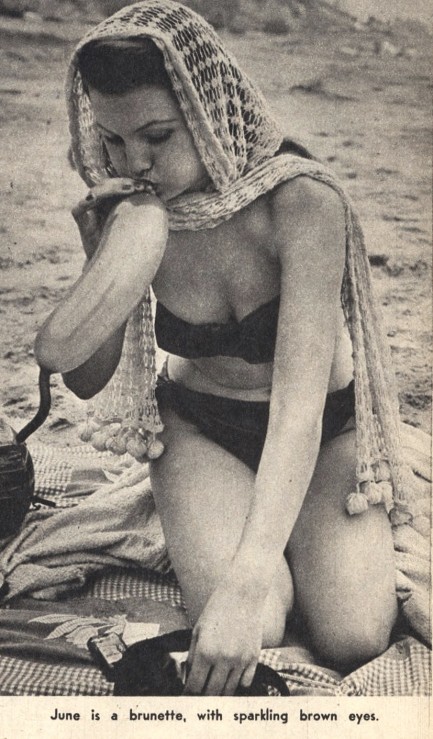
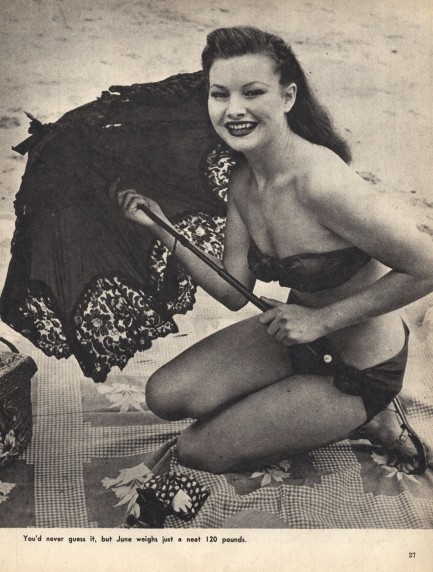
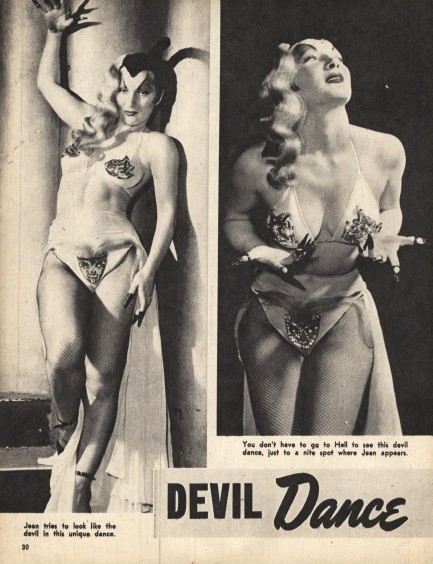
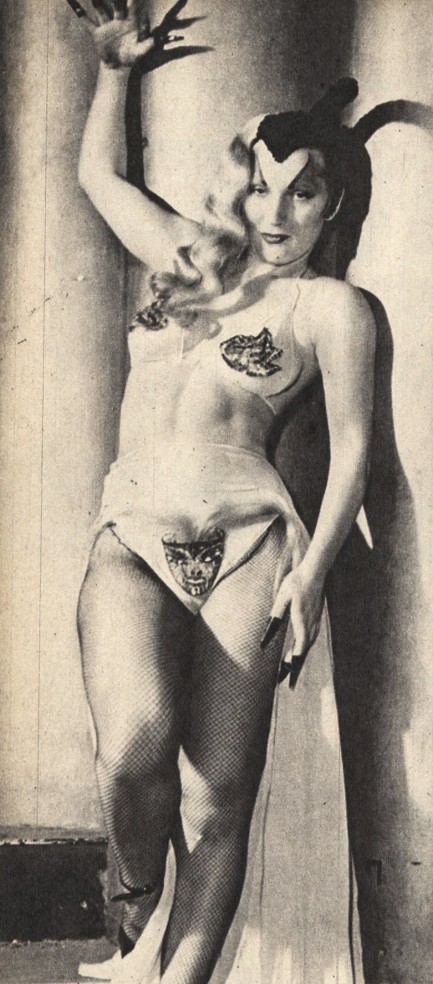
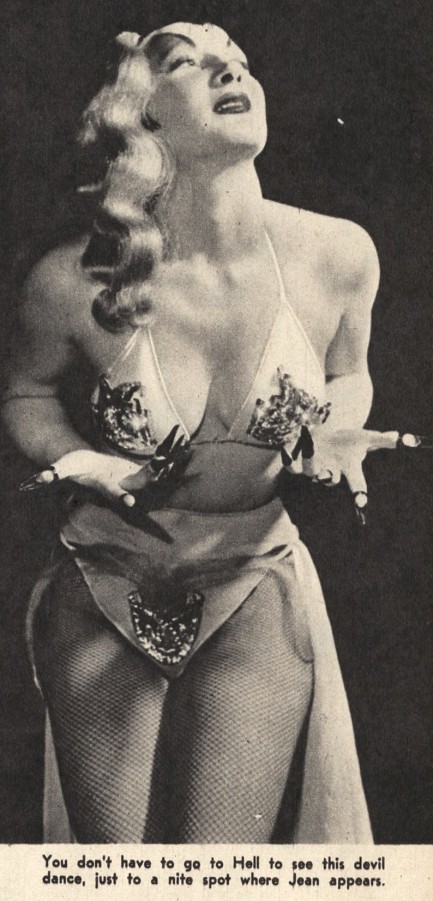
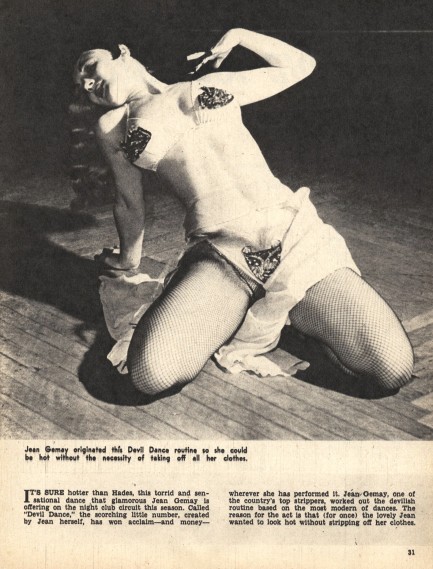
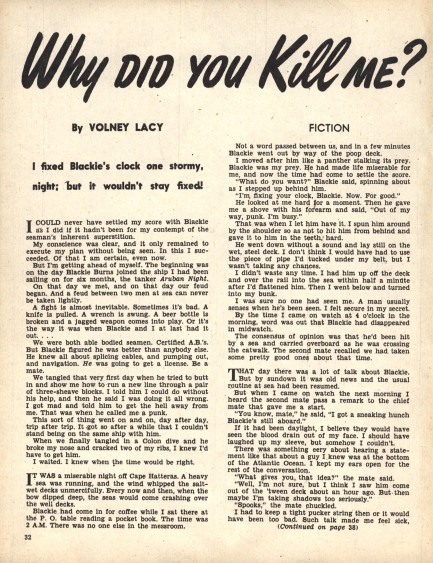
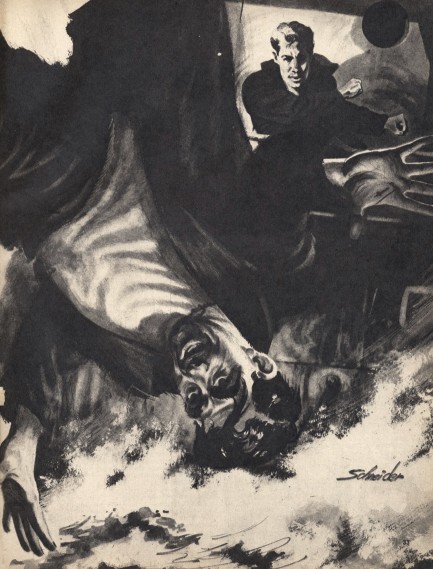
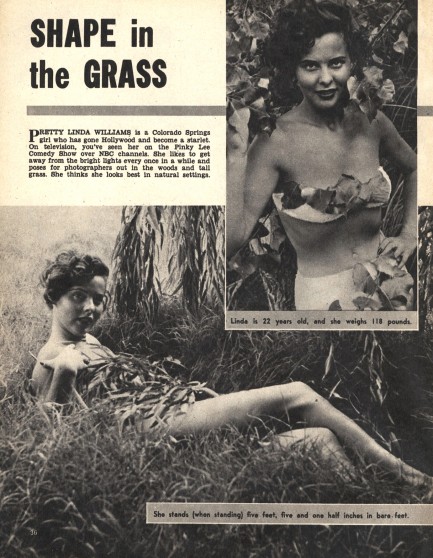
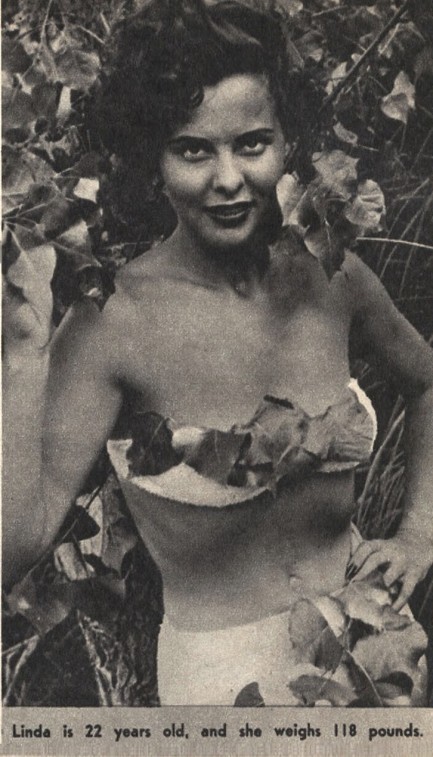
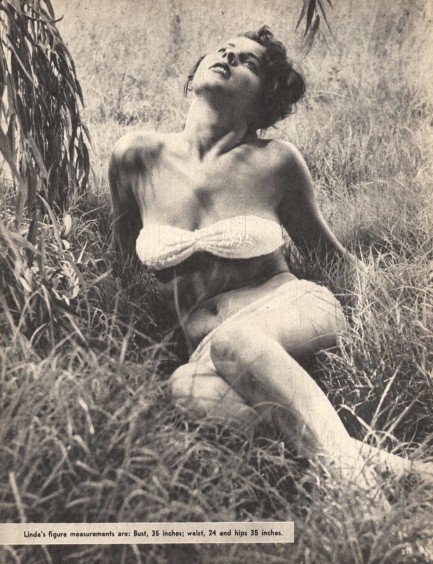
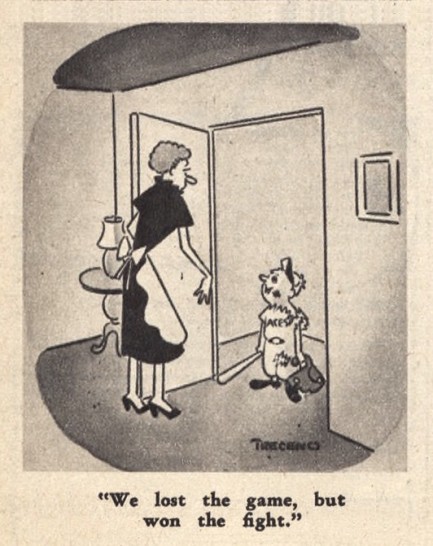

| Hollywoodland | Apr 2 2020 |

Shit. I knew moving up to the behemoth division was a bad idea.
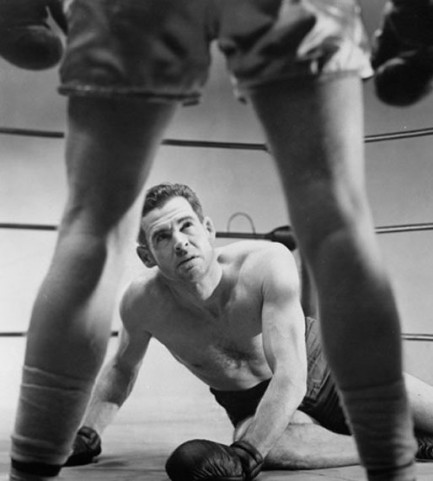
Above is a promo image made of Robert Ryan when he was starring in the gritty boxing noir The Set-Up. There's good news and bad news for Ryan here. The bad news is he's losing. The good news is he'll survive because his opponent only kills to eat. The film premiered today in 1949, and you can read what we wrote about it and see more promo images here.
| Vintage Pulp | Mar 6 2020 |

Oh, I plan to go for his body, alright. Particularly below the belt. I hope he plans the same for mine.
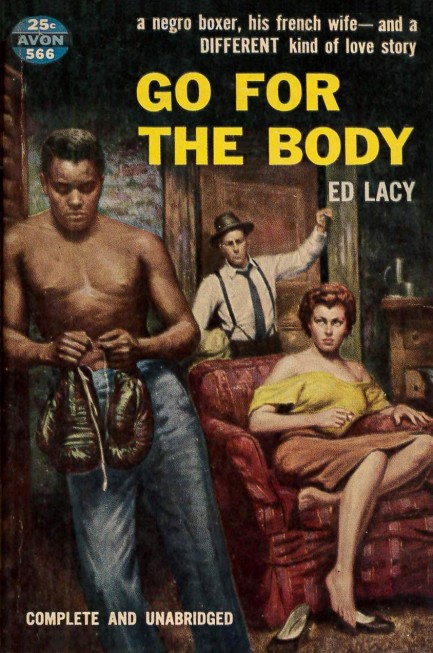
Ed Lacy is a fascinating writer, a fearless conceptualizer who sought unique angles for his vivid, often racially charged tales. His 1954 novel Go for the Body is a story of amazing imagination dealing with an ex-boxer and would-be promotor named Ken Francine who runs across a black American boxer in Paris. Francine already knows this other boxer, Bud Stewart, from Stateside. In fact, Stewart was the reason Francine retired, a decision brought on by a brutal ass-whipping that exposed his deficiencies in the ring. Now, years later in Paris, Francine sees an opportunity for profit, and begins pushing Stewart up the ladder in the European fight racket. The text on the cover art is deceptive. The book isn't really about the love story, “DIFFERENT” or otherwise, between Stewart and his beautiful wife. It's about Francine, local politics, the dirty work of promoting boxers, and murder.
In the hands of a brilliant writer this could have been an all-time classic. Don't get us wrong—it's still enjoyable. Lacy evokes the atmosphere of Paris effortlessly by sharing minute details. He never crosses the line into travelogue. A quip about the trendiness and expense of Perrier followed by a local's aside that the pipes in European cities weren't always great is enough to plant the idea in the reader's head that fizzy bottled water became popular because it was known to be clean. Another example is how Lacy doesn't bother to describe any of the geography or people of Champs-Élysées, but simply notes that you see big American cars there. He makes clever choices like these throughout Go for the Body, never taking the obvious route, instead relying on readers' ingrained knowledge of Paris from popular culture to fill in the blanks.
His plot does the same. Guessing which direction the narrative will go will likely prove fruitless. Of course, certain aspects are required, such as the Parisian flavor, the post-war malaise, and the nostalgia for a lost love. And naturally, boxing novels nearly always lead up to a big fight, and this one does too, in Milan, Italy. But there's far more on the line in that final bout than any reader could possibly suspect when the book begins. That's the main reason we give Go for the Body a thumbs up—its scope. Lacy is no Faulkner or Malamud, and his main character Ken Francine is confoundingly slow-witted at times (as an ex-fighter who was literally beaten into retirement it's possible he's not supposed to be very bright), but the tale delivers a solid punch. It may not knock you for a loop, but in the end the decision goes in its favor.
| Hollywoodland | Oct 30 2019 |

America's oldest tabloid continues its appointed rounds.
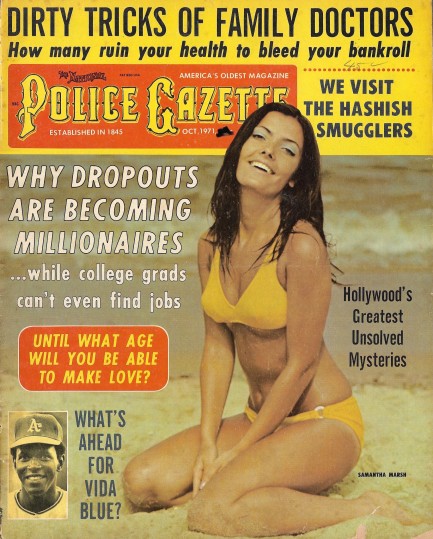
Today we have the cover and some interior scans from an October 1971 issue of the National Police Gazette, which dutifully explores its usual realms of sports, crime, and Hollywood. The magazine was founded in 1845, which is always astounding to consider. We bought a pile of these ages ago. In fact, they were the first bulk purchase of tabloids we ever made for the website. These ’70s issues of Gazette tend to be very cheap, but, as late stage editions, don't hold much intrigue, which is why we hadn't scanned one since 2014.
But we have to clear some space in our Pulp cave, so we scanned this one and immediately sailed it into the recycling bin. On the cover you have Samantha Marsh, and inside you get Joe Louis and Max Schmeling, Australian model Deanne Soutar, speculations on how old men can be and still have sex, hashish smugglers from India, and a story on the mysterious death of actress Thelma Todd. More from Police Gazette coming soon.
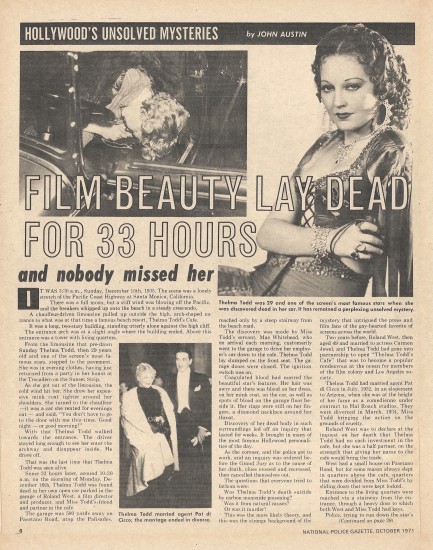
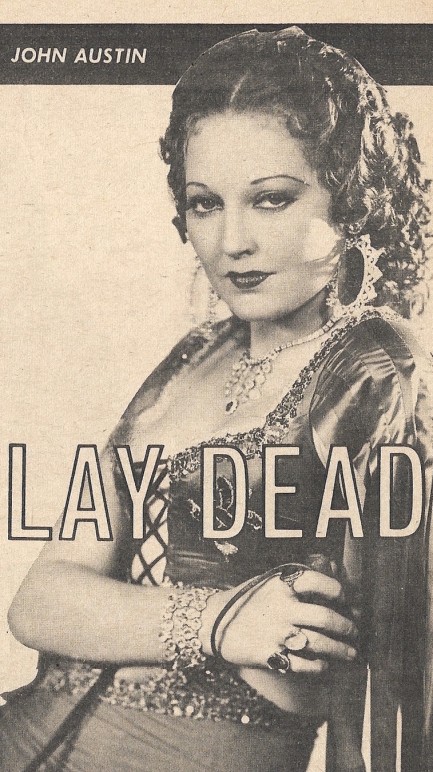
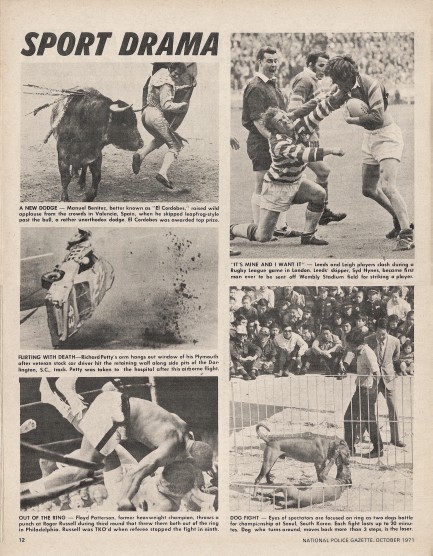
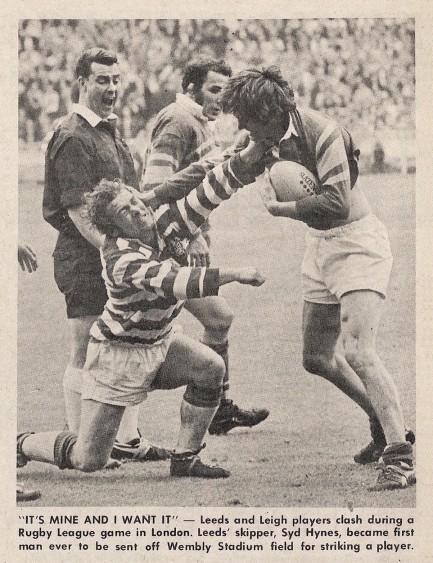
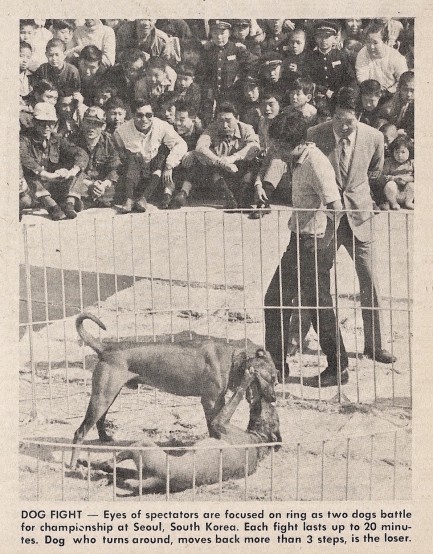
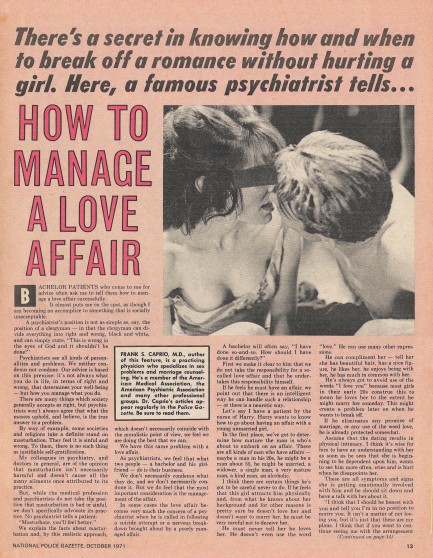
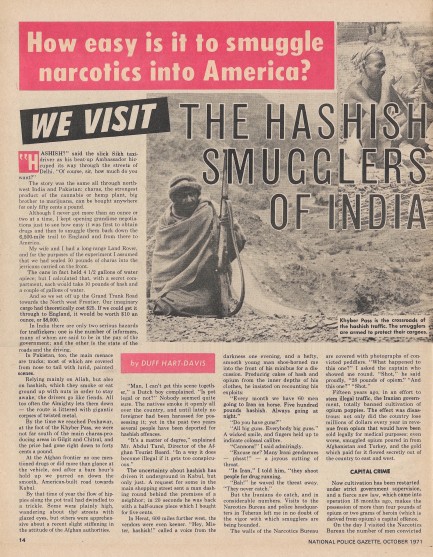
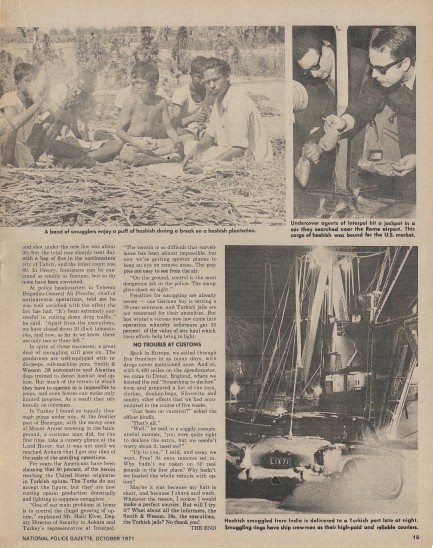
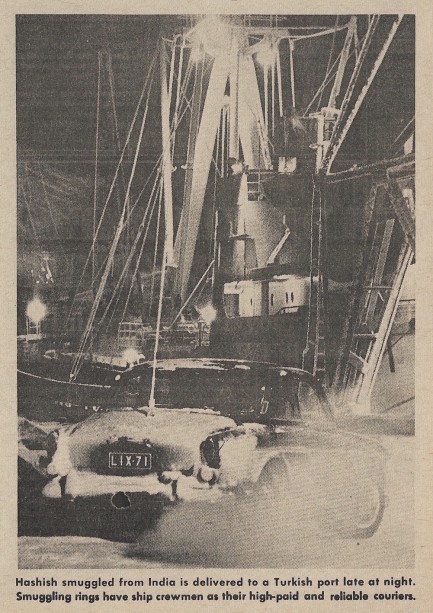
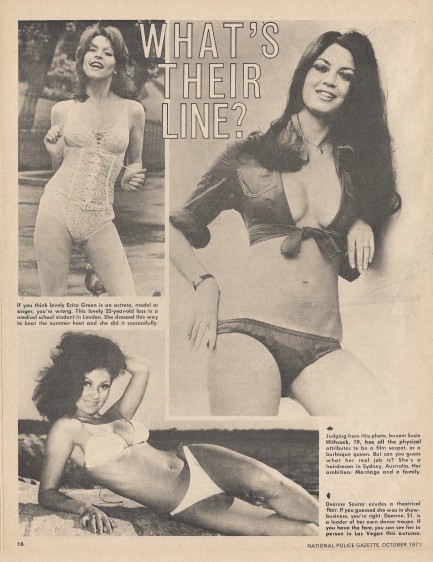

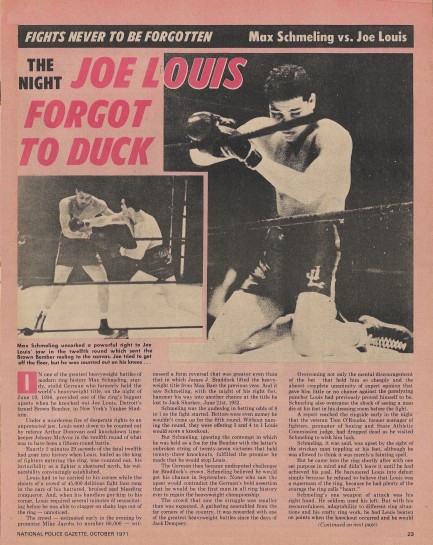
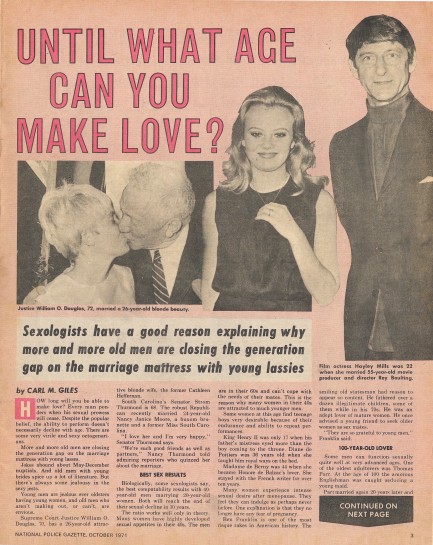
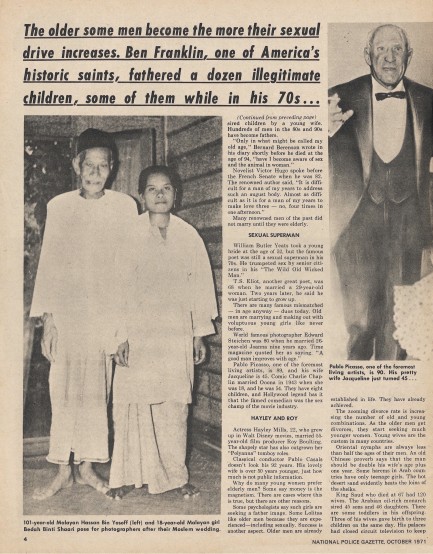
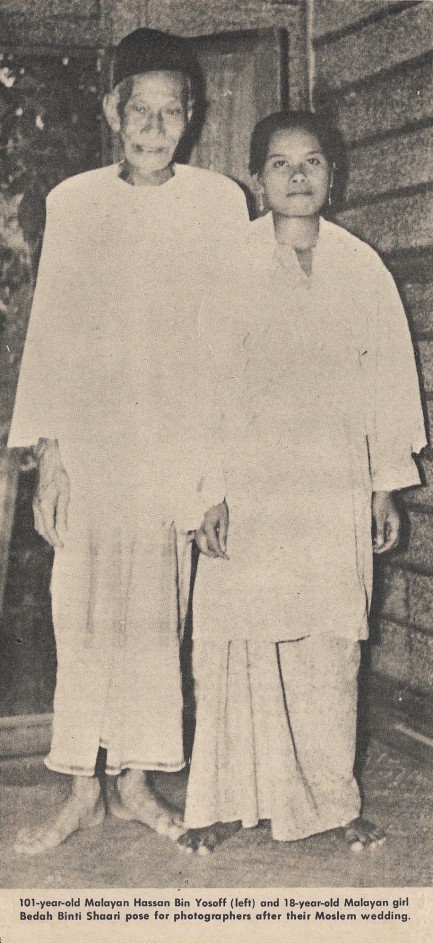

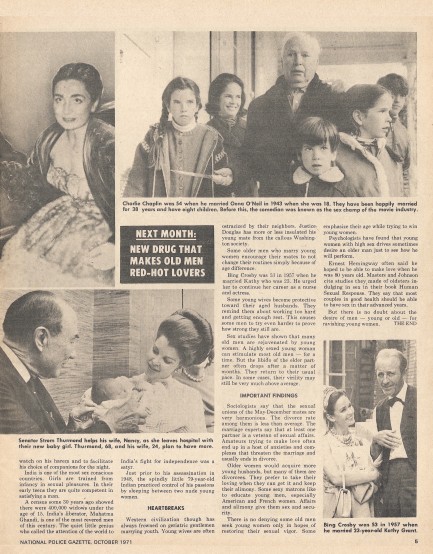
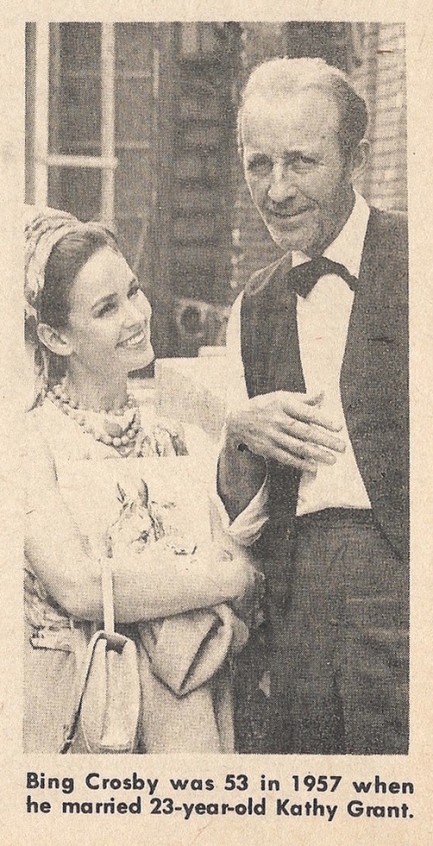
| Intl. Notebook | Sep 25 2019 |

Politics, show business, and sports collide in one of the U.S.'s oldest magazines.
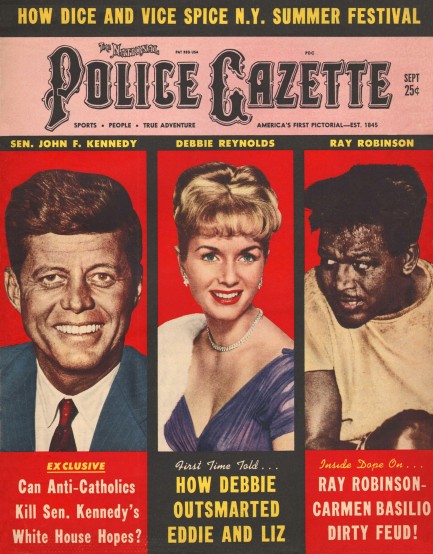
We've shared lots of issues of The National Police Gazette, but this September 1959 cover, more than others, neatly emphasizes the magazine's three focus areas—politics, celebrity, and sports. Dishing on political figures and celebs was typical for mid-century tabloids, but Gazette's devotion to sports made it unique. And its favorite sport was boxing. Every issue we've seen has reserved a chunk of pages for the sweet science.
In this case the scientist is Sugar Ray Robinson, and the story about him discusses the rivalry he had with Carmen Basilio. The two fought twice when Robinson was in decline at the tail end of his career. Sugar Ray lost the first bout—considered by boxing historians to be one of the greatest fights ever—and a year later won the second. Every boxer declines, but Robinson's career record stands tall—he fought two hundred times and tallied 173 wins, 108 of them by knockout. But for all that hard work he ended up—as boxers often do—flat broke.
Police Gazette was launched in 1845, as incredible as that seems, and was still going strong more than a century later when this issue appeared. We have about twenty-five scans below and seventy-five more entries on Gazette in the website comprising many hundreds of pages. The easiest way to access those, as well as numerous other mid-century tabloids, is via our tabloid index located here.
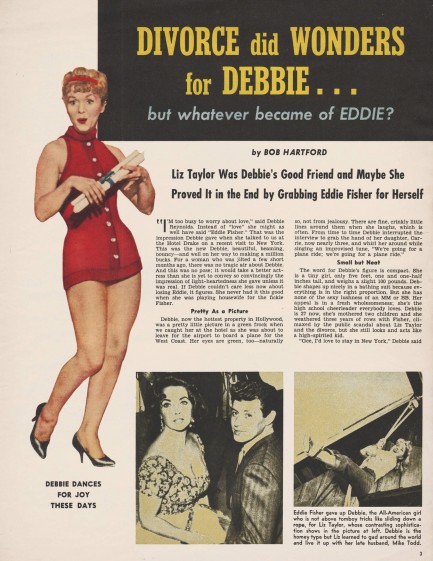
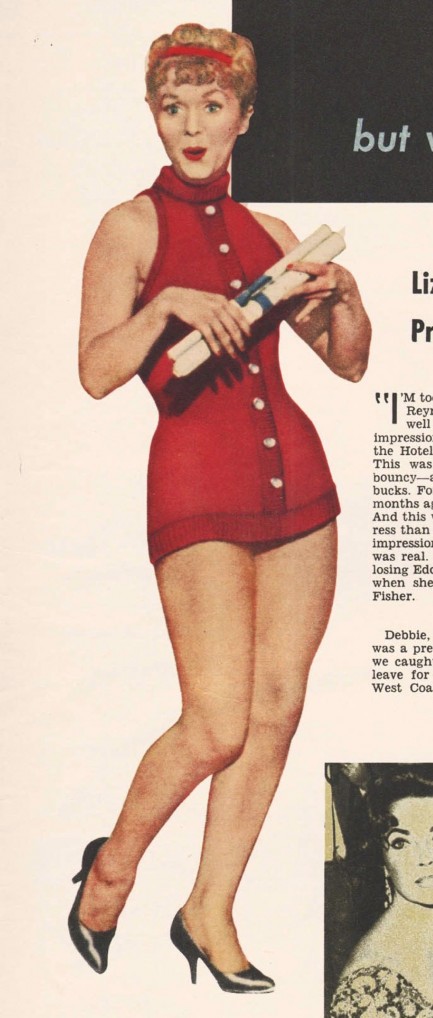
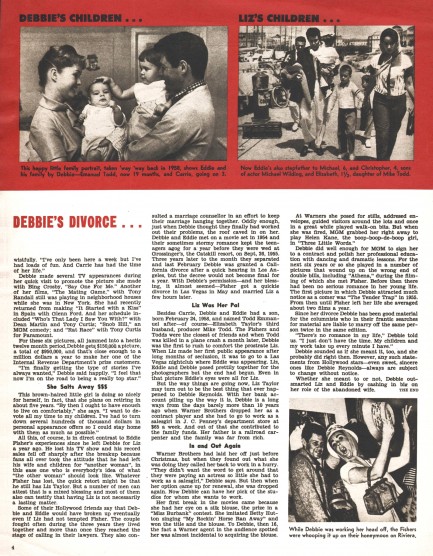
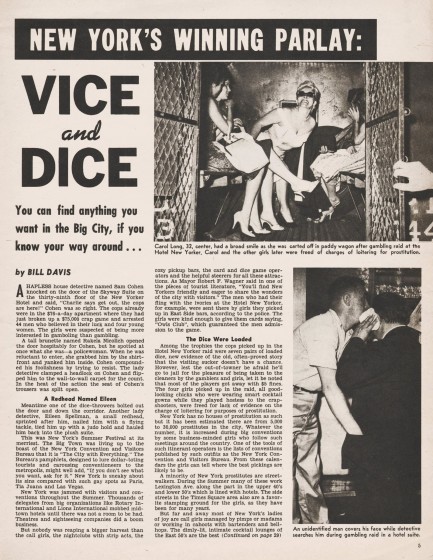
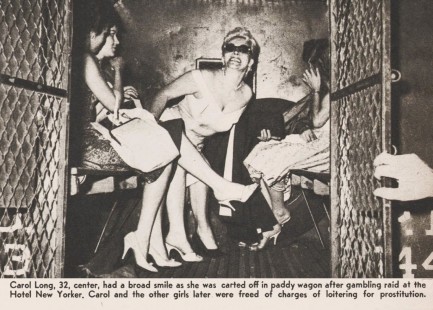
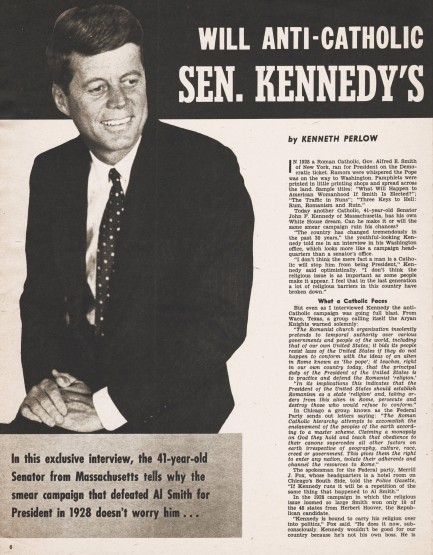
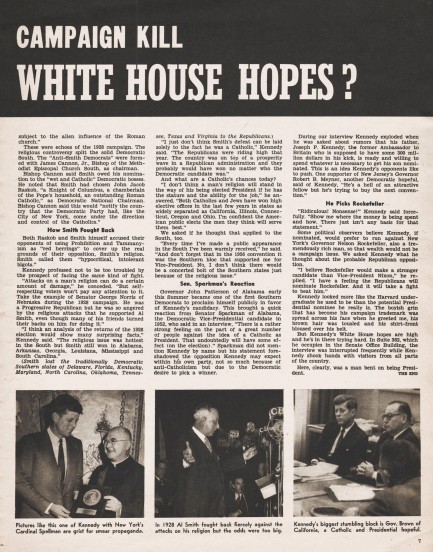
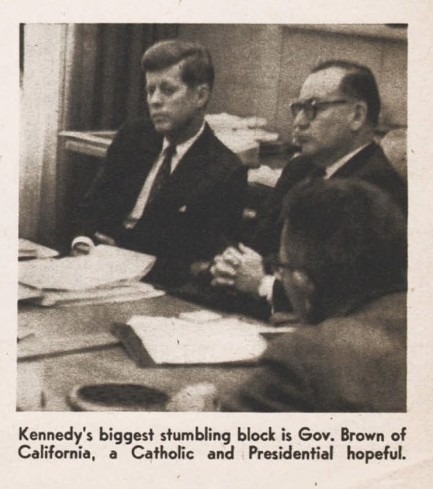
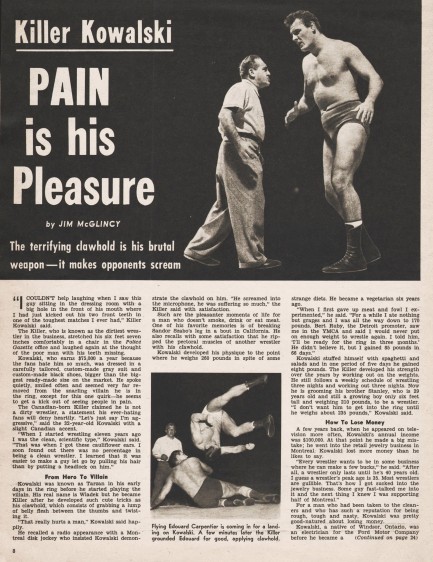
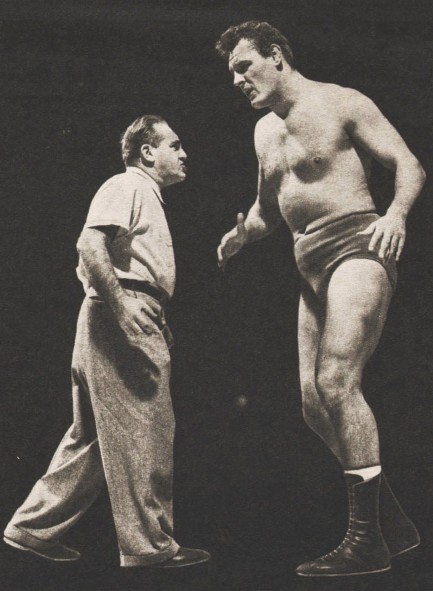
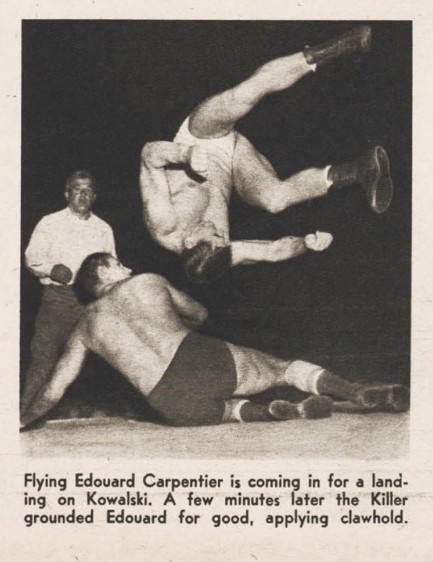
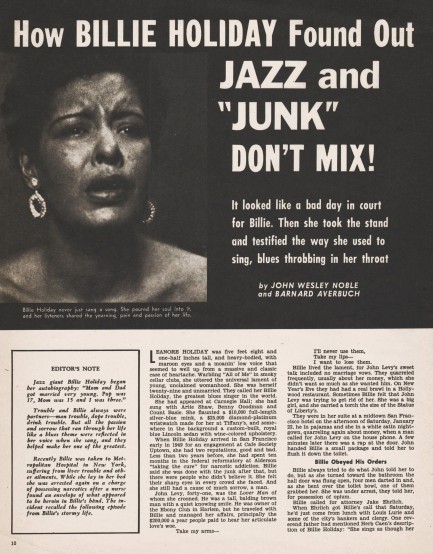
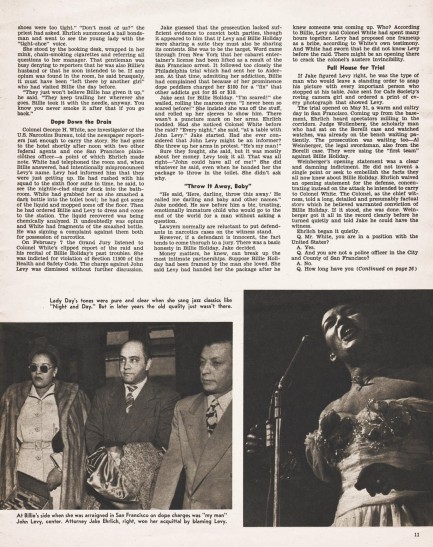
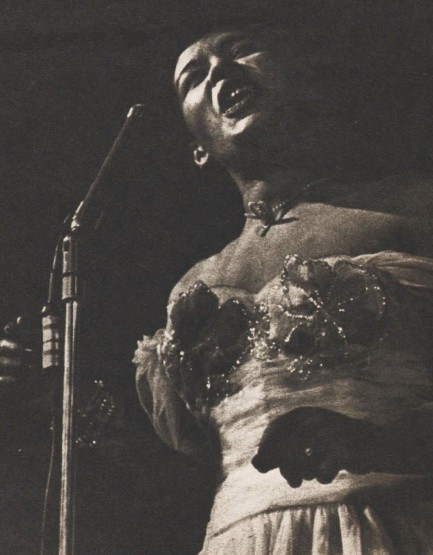
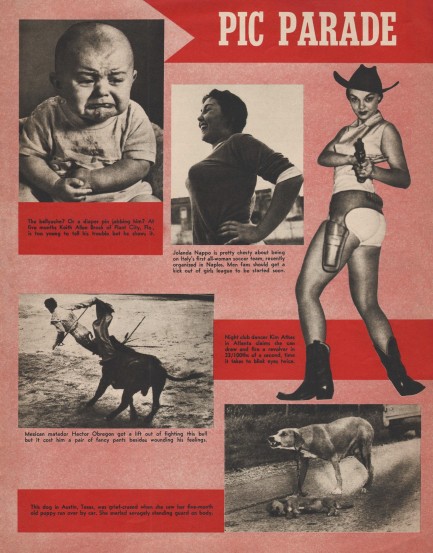
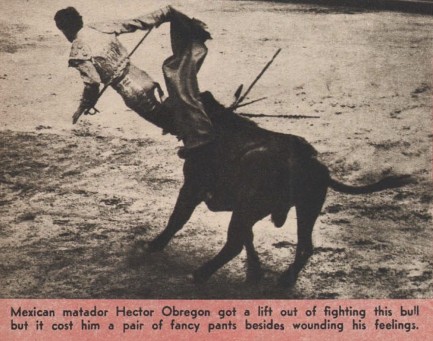
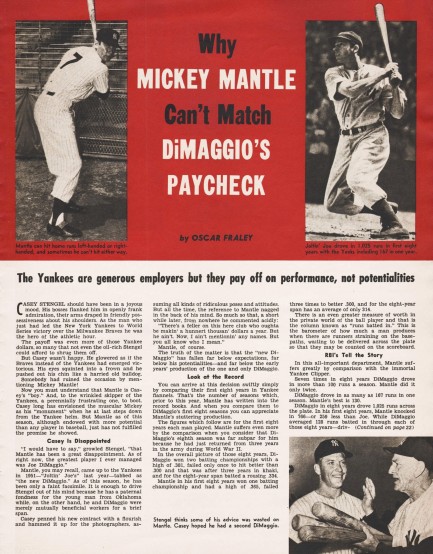
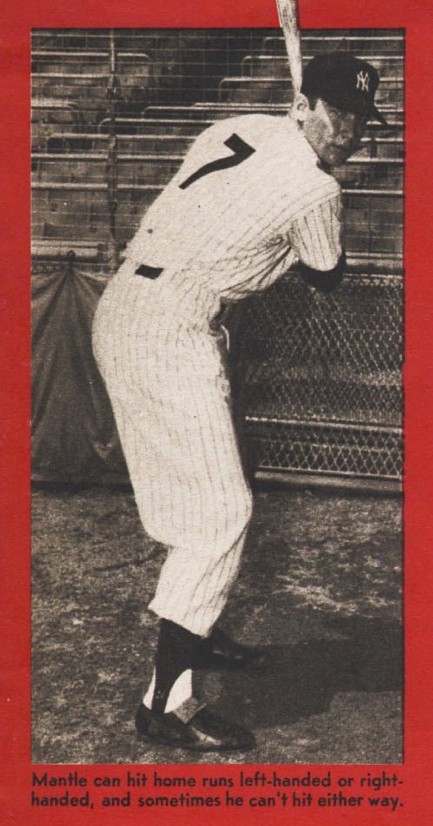
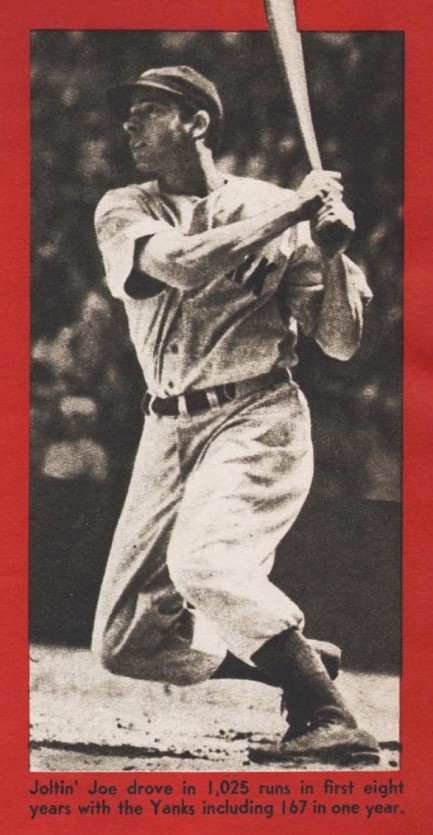
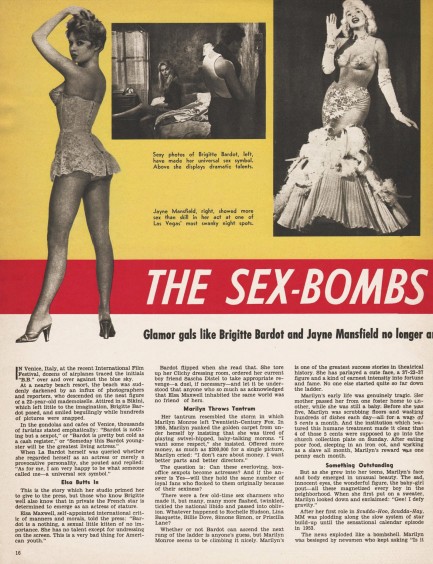
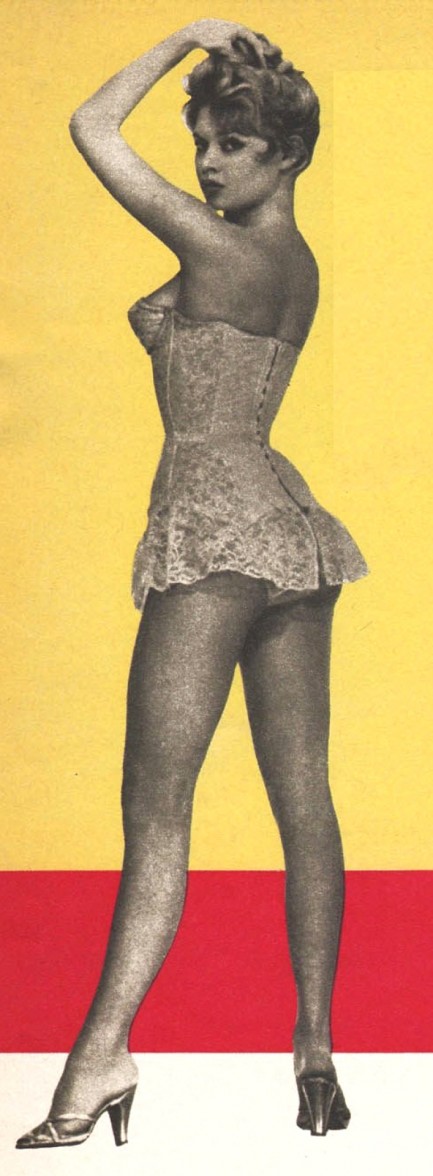
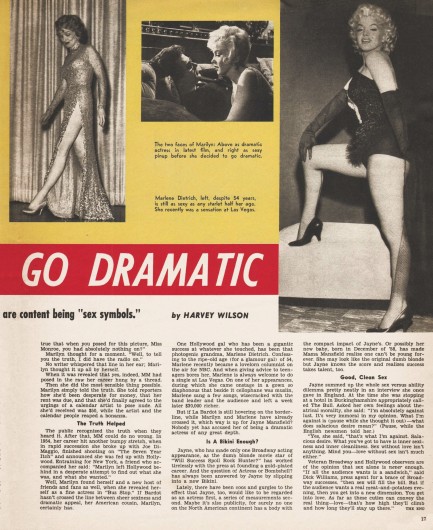
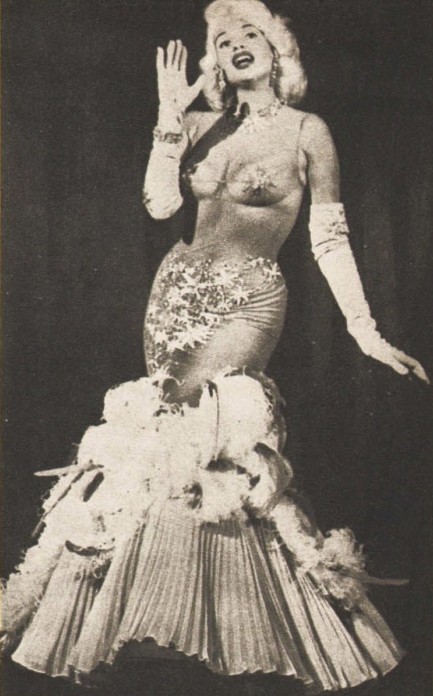
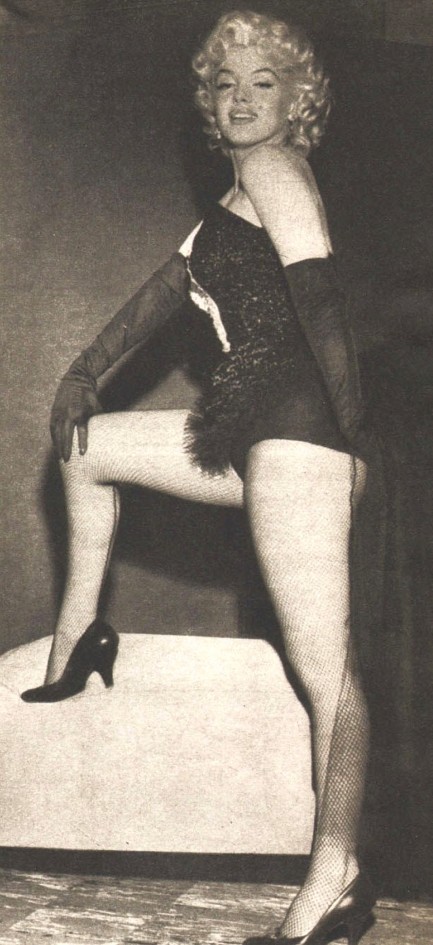

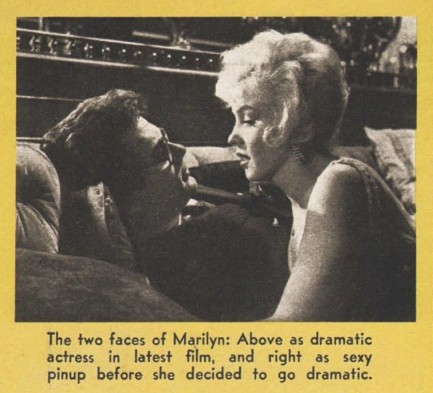
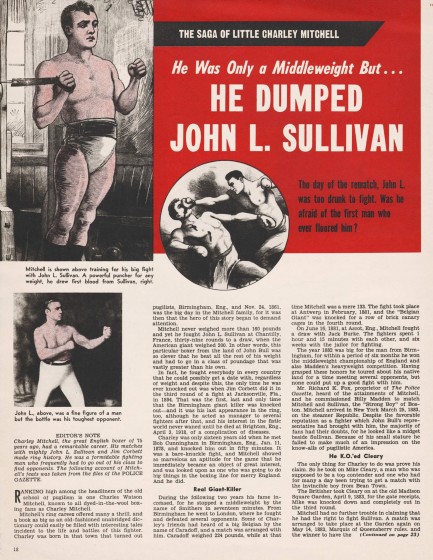
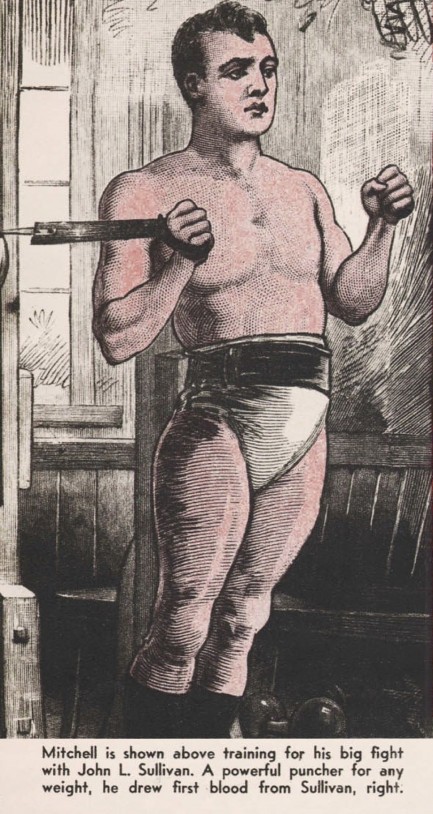
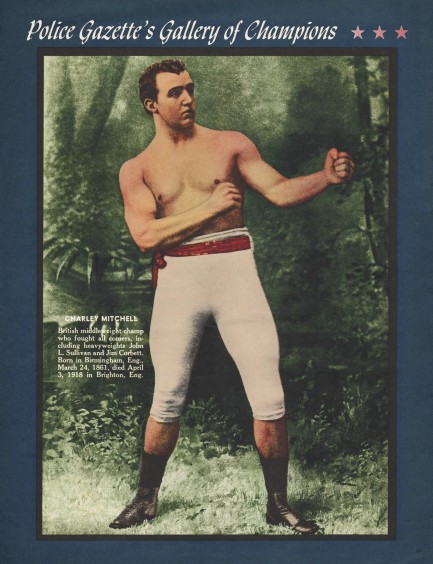
| Vintage Pulp | Sep 2 2019 |

Okay, Galahad—I want you to forget you're the most gallant of all the knights and beat this guy like a circus monkey.
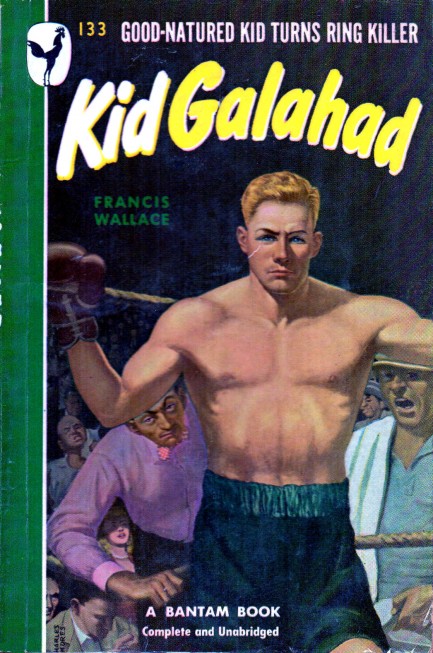
Above, a cover for Kid Galahad by Francis Wallace. You get all the elements here—the natural talent, the meteoric rise from obscurity, the weakness for women, the predatory gangsters, the big fixed fight, etc. The book is originally copyright 1936 with this Bantam edition fronted by Charles Andres art appearing in 1947.
| Intl. Notebook | May 27 2019 |

He wasn't the first and he turned out not to be the last.
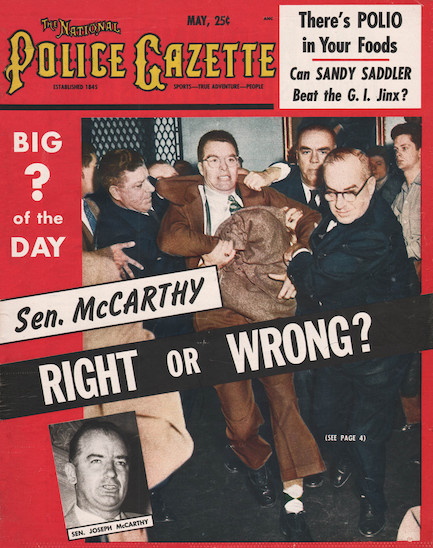
This issue of The National Police Gazette was published this month in 1954, with a cover asking whether Senator Joseph McCarthy was right or wrong. About what exactly? About whether the U.S. Army was infiltrated by communists. This Gazette appeared during the Army–McCarthy hearings, which were held from April to June of ’54, looking into accusations of corruption made against a McCarthy loyalist by high ranking members of the U.S. Army, and McCarthy's commie counter-accusations, as well as assertions by him that the Army's claims against his associate were politically motivated. You could mistreat and insult lots of groups in the United States back then and most people didn't greatly care, but as a politician you couldn't—and still can't—do it to the armed forces. McCarthy was a classic demagogue who trafficked in blame and demonization of entire groups of people, but he overstepped his bounds when he took on the Army. He came out of the hearings looking terrible, and his downfall was assured.
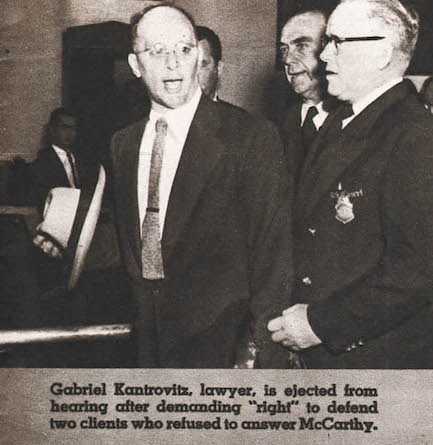
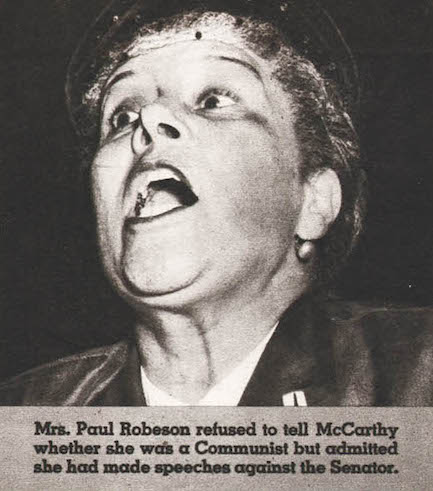
 Police Gazette is solidly on McCarthy's side, though, which is no surprise if you know anything about the magazine. The basis of its support is that McCarthy was right that there were influential communists in America. At the time, only a brave few people seemed capable of asking why that was an issue at all.
Police Gazette is solidly on McCarthy's side, though, which is no surprise if you know anything about the magazine. The basis of its support is that McCarthy was right that there were influential communists in America. At the time, only a brave few people seemed capable of asking why that was an issue at all.Numerous western countries had fully functioning communist parties then, and for the most part they still do. Yet given a place in the arena of ideas, communists haven't gained much traction with the public. Possessing the right to elect communist politicians, the vast majority of people haven't voted for them, and in the case of the U.S. it's reasonable to assume they never will.
Yet McCarthy believed U.S. voters should not even be allowed to hear communist ideas. It may be stating the obvious in this day and age, but if traditional political offerings—from whatever end of the spectrum—can't win the debate against those of an upstart's, then it's because politics as usual are adjudged by the populace to be a failure. The obvious solution for mainstream parties is to have better policies, but often vested interests make that a practical impossibility.
McCarthy and the Gazette believed suppressing communist political thought was a sign of strength, but in reality it was a sign of weakness symptomatic of an irrational fear that their policies, if measured against those of communists, would fail to win the hearts of American voters. And this is perhaps why, while American demagogues such as him sometimes have their moment of support, history never judges their lack of faith kindly. The McCarthys of political life always pretend to be divinely guided, or driven by a greater purpose, or bestowed with an unshakeable public mandate—sometimes all three—but once the cruelty at the heart of their demagoguery becomes clear, their supporters quietly scurry for the exits.
McCarthy and the Gazette believed suppressing communist political thought was a sign of strength, but in reality it was a sign of weakness symptomatic of an irrational fear that their policies, if measured against those of communists, would fail to win the hearts of American voters. And this is perhaps why, while American demagogues such as him sometimes have their moment of support, history never judges their lack of faith kindly. The McCarthys of political life always pretend to be divinely guided, or driven by a greater purpose, or bestowed with an unshakeable public mandate—sometimes all three—but once the cruelty at the heart of their demagoguery becomes clear, their supporters quietly scurry for the exits.
In the end, demagogues go into the history books as, at best, national embarrassments, or at worst, scourges and human monsters. Americans don't much like presumptions to be made for or about them. Really nobody does, even presumptions for the supposed greater good. McCarthy presumed too much. Today his name has become an adjective signifying a type of opportunistic treachery, the place of honor in the American political pantheon he thought he was building for himself never came to be, and he died knowing people were glad he was going away. He won't be the last American demagogue this happens to. We have numerous scans below, and many more Gazettes in the website.
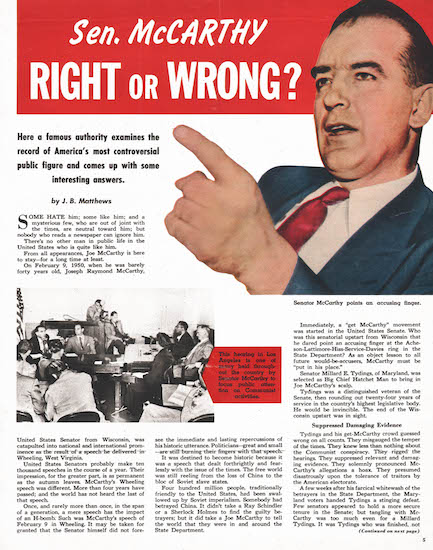
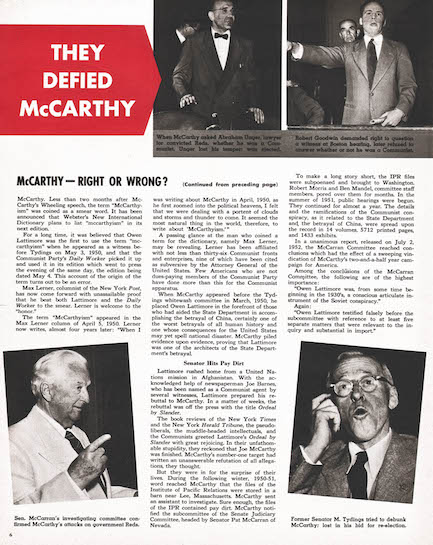
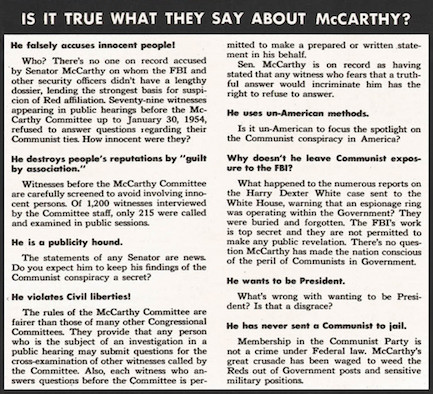
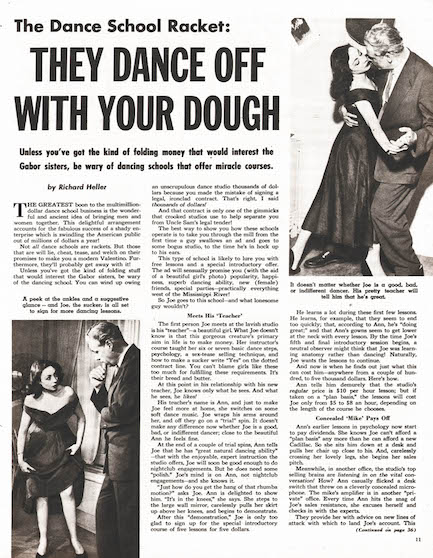
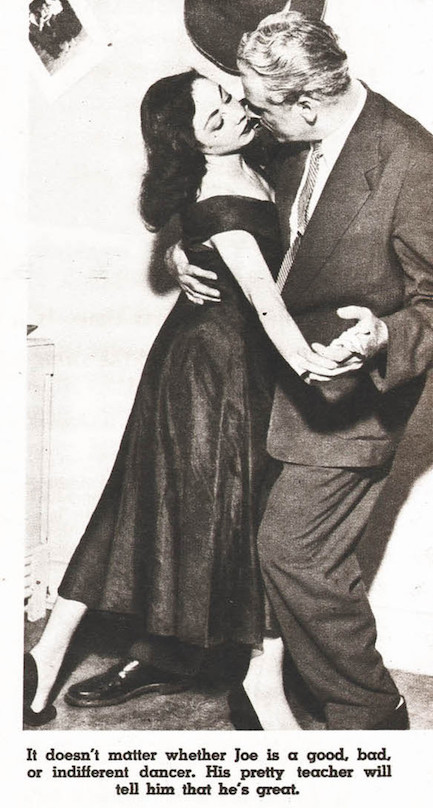
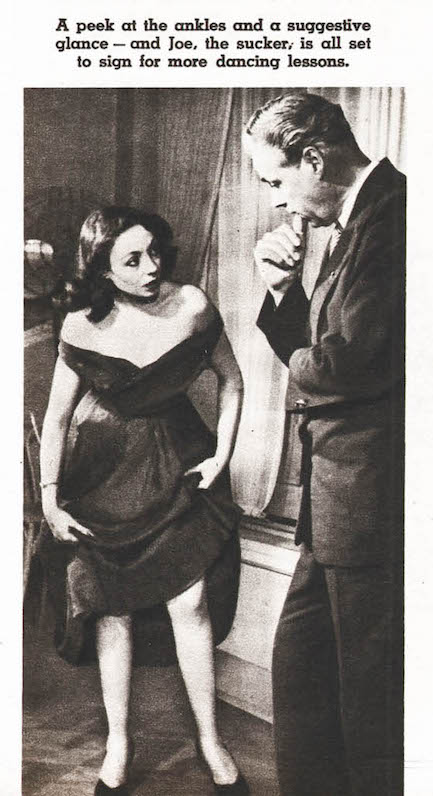
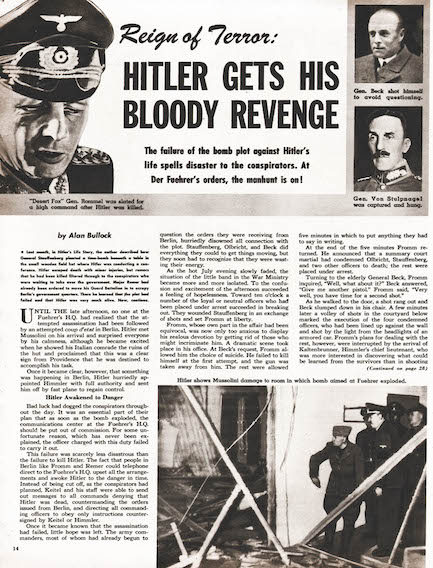
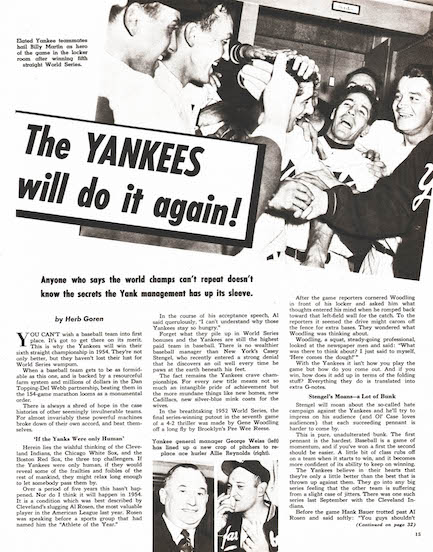
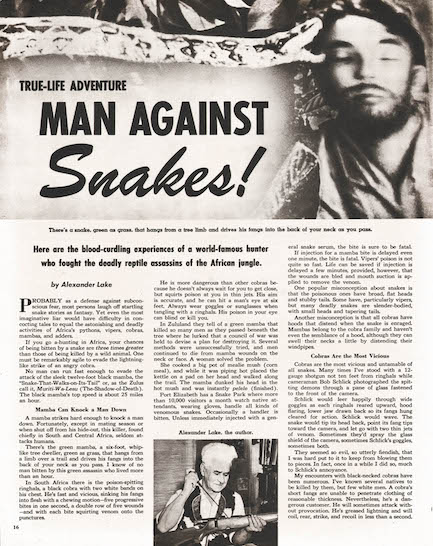
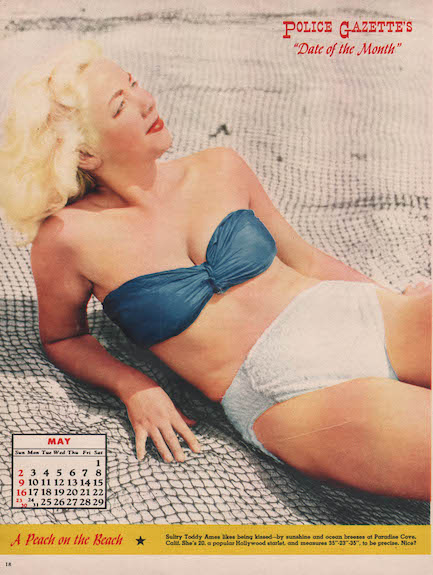

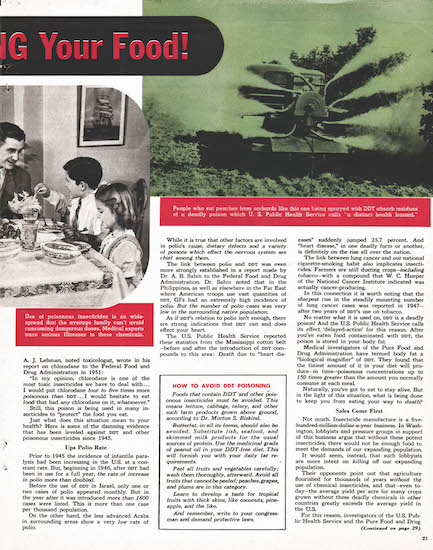
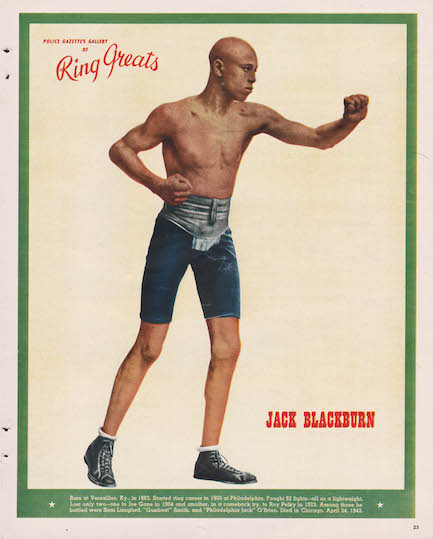
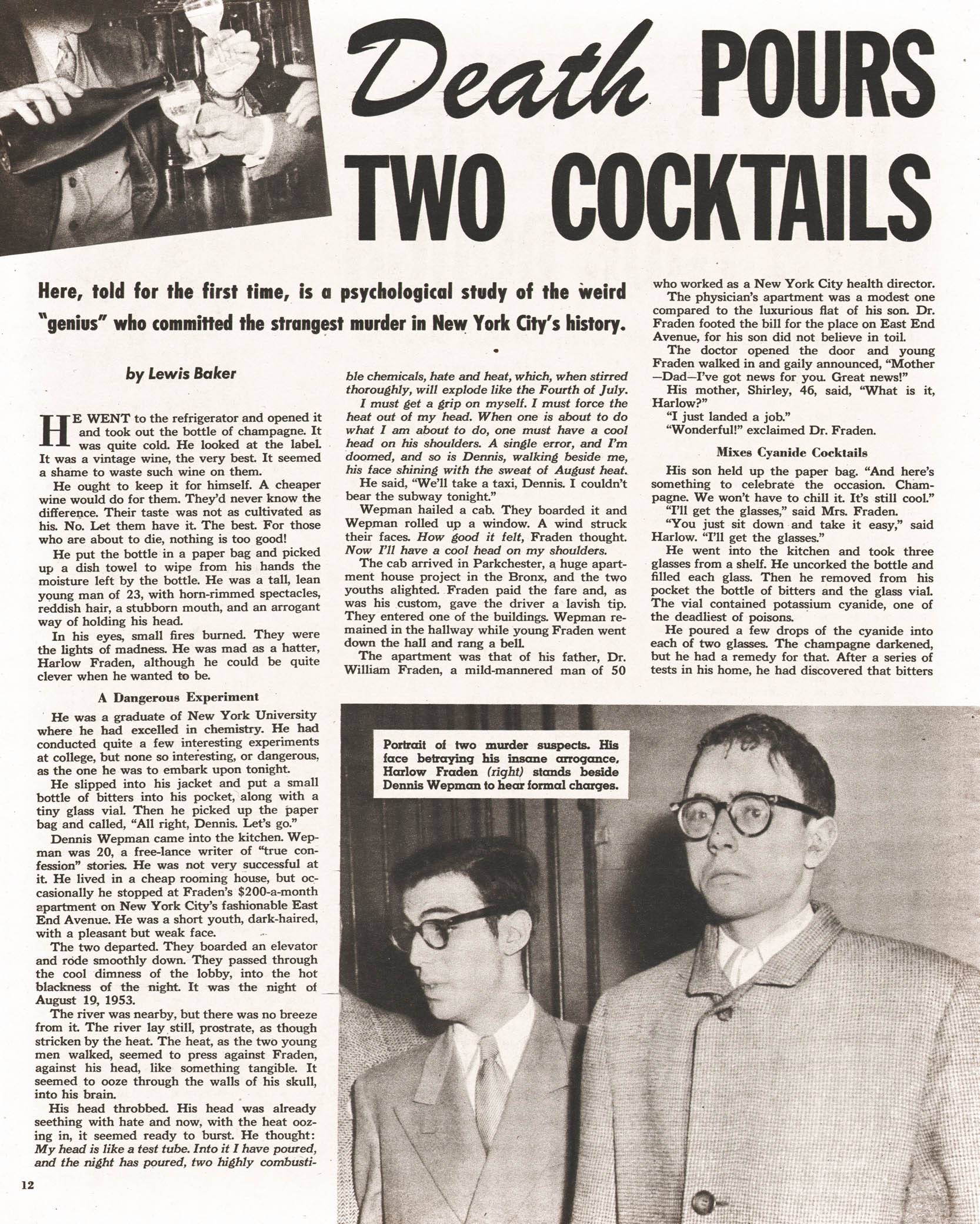
| Vintage Pulp | Apr 2 2019 |

Gangsters try to steal Robert Ryan's boxing future.
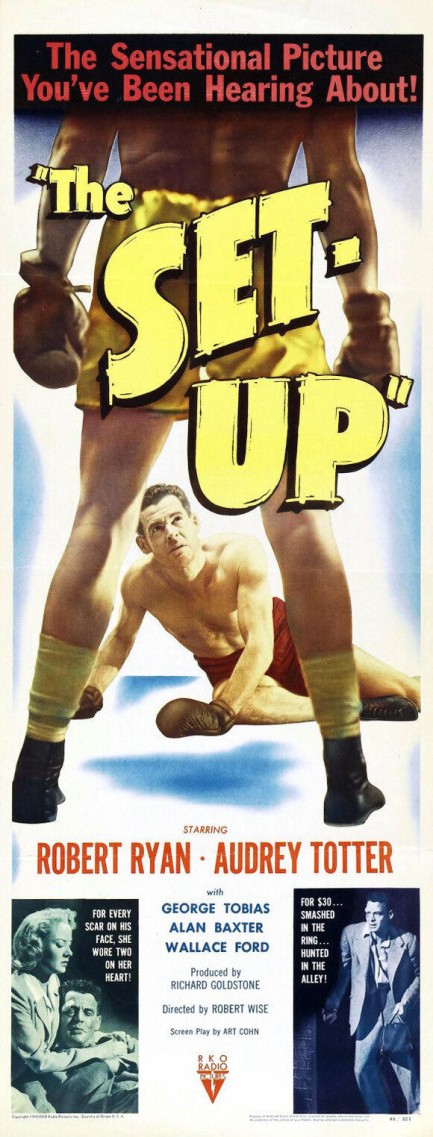
In film noir there are procedural cop movies. The Set-Up is a procedural boxing movie. It tries to take viewers behind the scenes of the violence, bloodlust, and money to focus on the nuts and bolts of the fight game. Starring Robert Ryan as an aging heavyweight and Audrey Totter as his fretful girlfriend, most of the first half of the film takes place in a claustrophobic locker room as boxer after boxer goes out for subsequent bouts of a six card program like gladiators in Rome's Coliseum. Ryan is the main event, and when his name is called the action shifts to the ring for his fight, which is shown in something close to real time.
Ryan is hoping a win over an up and coming young fighter will earn him one last shot at fortune and glory, but he has no idea the fix is in. Somebody should have told him, because if he wins the bout he'll be in heaps of trouble. This is a good flick. It was helmed by Robert Wise, has some fantastic directorial extravagances, and looks spectacular in general, like the gritty documentary photos of Arthur Weegee Fellig, which is no small feat for a film shot entirely on an RKO backlot (Weegee, incidentally, has a cameo as a timekeeper). In the realm of boxing movies The Set-Up stands toe to toe with most. It premiered in the U.S. today in 1949.
Ryan is hoping a win over an up and coming young fighter will earn him one last shot at fortune and glory, but he has no idea the fix is in. Somebody should have told him, because if he wins the bout he'll be in heaps of trouble. This is a good flick. It was helmed by Robert Wise, has some fantastic directorial extravagances, and looks spectacular in general, like the gritty documentary photos of Arthur Weegee Fellig, which is no small feat for a film shot entirely on an RKO backlot (Weegee, incidentally, has a cameo as a timekeeper). In the realm of boxing movies The Set-Up stands toe to toe with most. It premiered in the U.S. today in 1949.
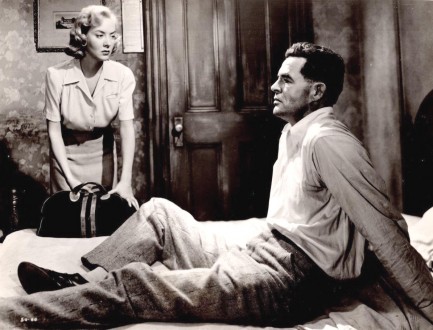
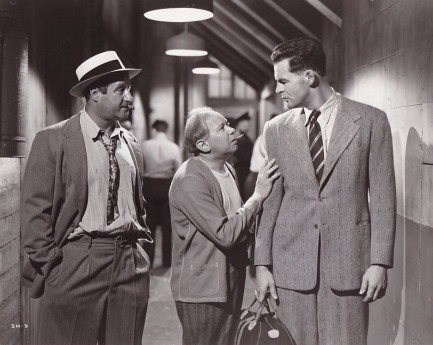
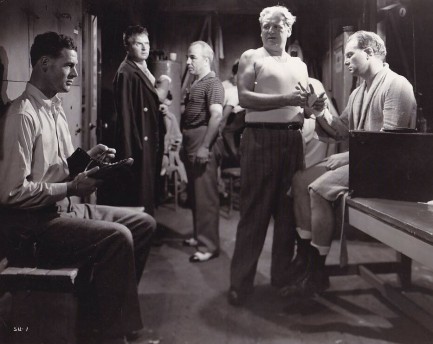
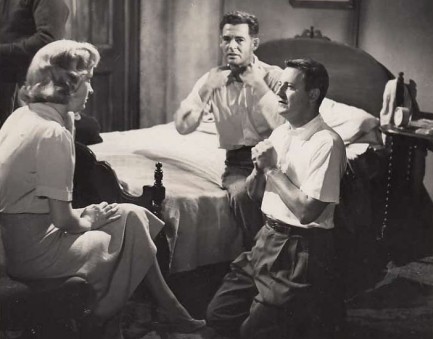
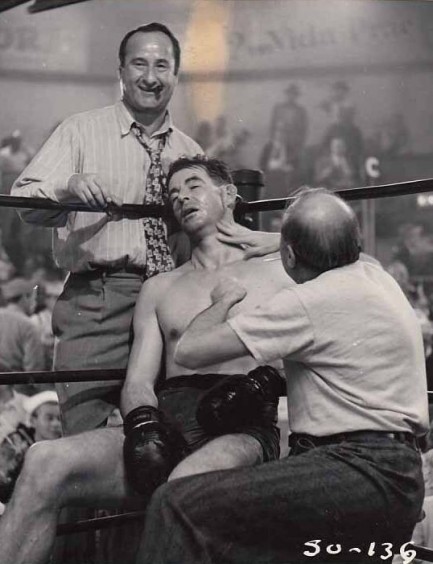
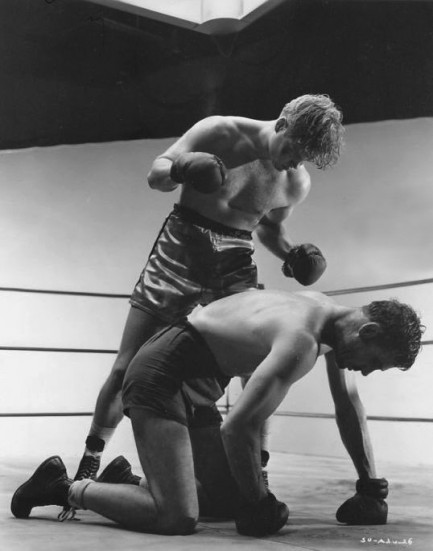
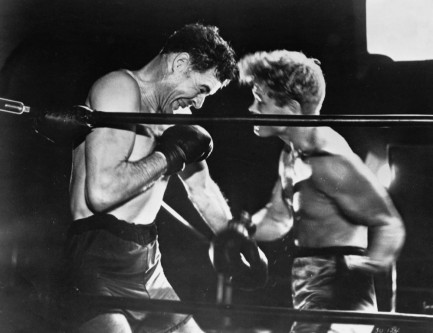

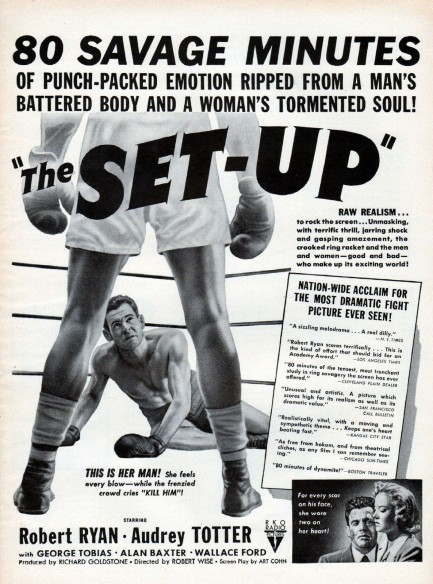
 |
 |






